Inbox and environment news: Issue 531
March 20 - 26, 2022: Issue 531
Newport SLSC Youngsters Take 3 For The Sea

Save Australia's Wildlife Group Make Whopping Donation Towards Saving Local Wallabies


Fauna Fences Down On Wakehurst Parkway: Please Drive Carefully Until They Are Restored
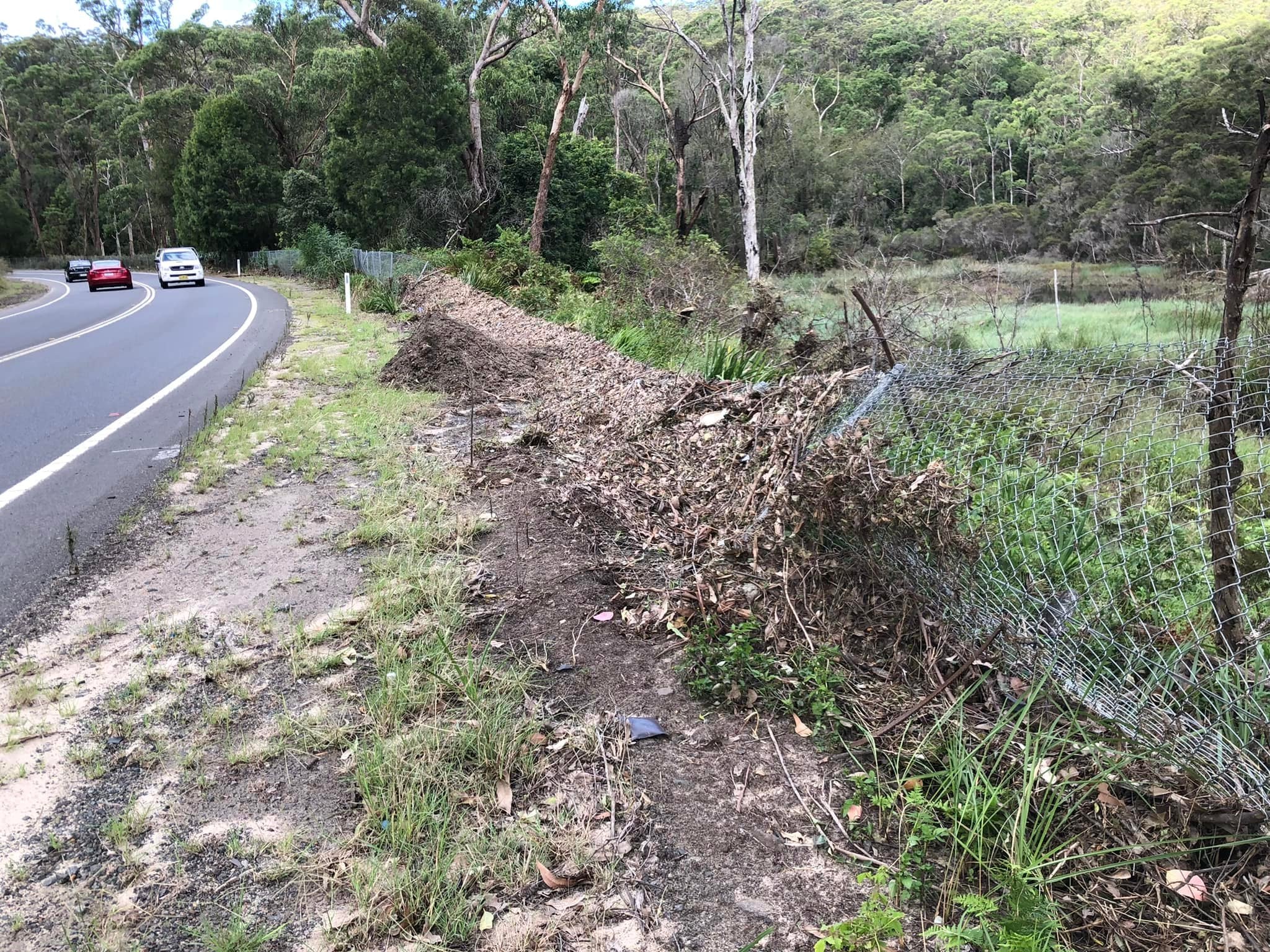
The Green Green Grass Of Des Creagh Reserve Avalon Beach
Weeds Strangling Trees At Governor Phillip Park Still Not Cleared; Banksias Now Dying
photo taken this week shows banksias are now submerged in weeds and beginning to die off - visit: $198,859 Allocated To Council For Weed Control - Governor Phillip Park Misses Out (and other much needed areas) - February 13, 2022
Careel Creek Still Flooded But Moorhens-Ducks Ok
Newport Pool Cliff Face Risk: New Film From John Illingsworth
Published March 15, 2022
John Illingsworth: Recent rain has further destabilised this cliff-collapse and landslide hotspot. When the beach is washed away like this, if you use the access track at the foot of the cliff your life may be at significant risk. Here is why.
NSW Landcare And Local Land Services Conference 2022 + 2021 NSW Landcare Awards Finalists And Winners
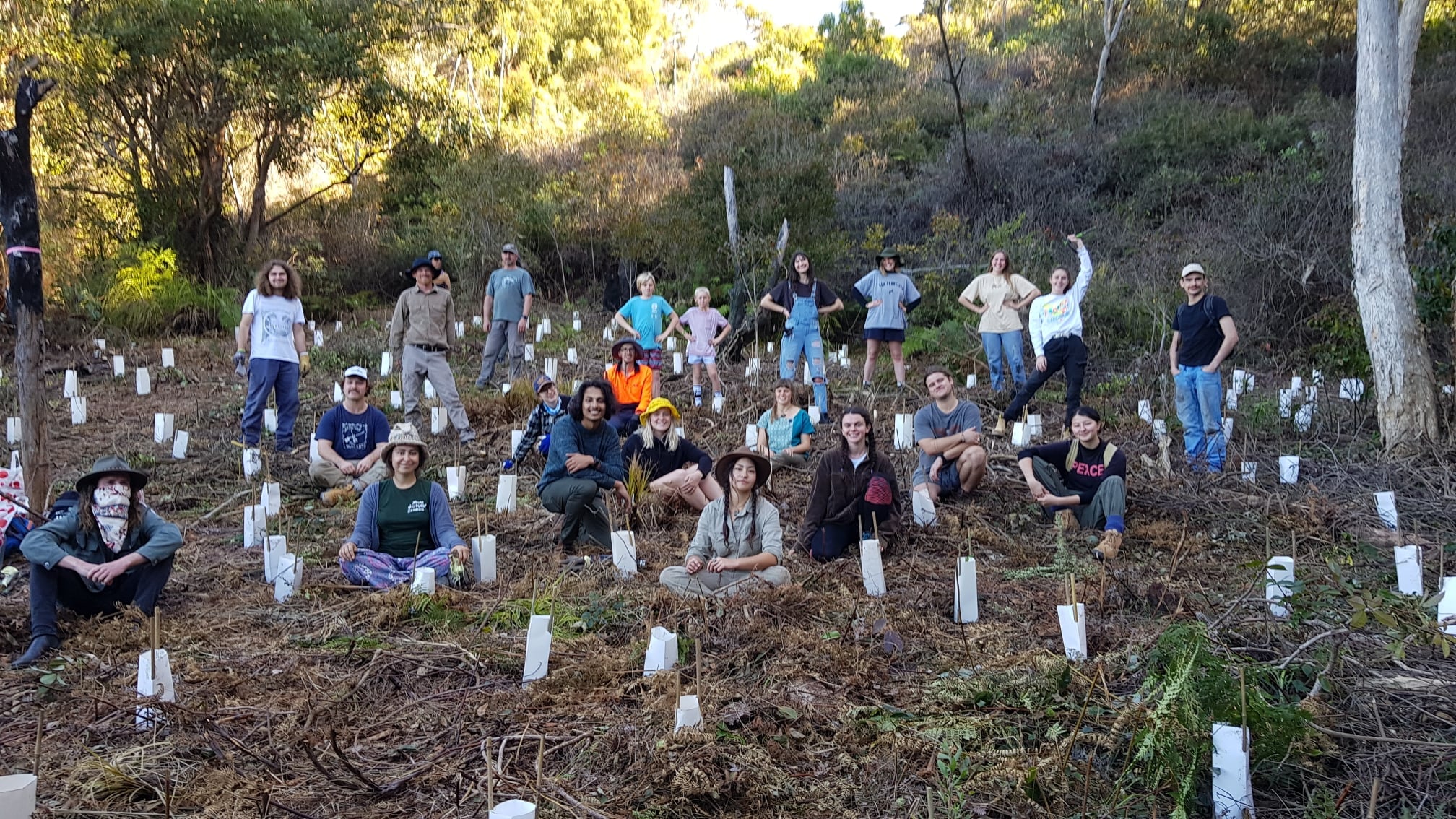
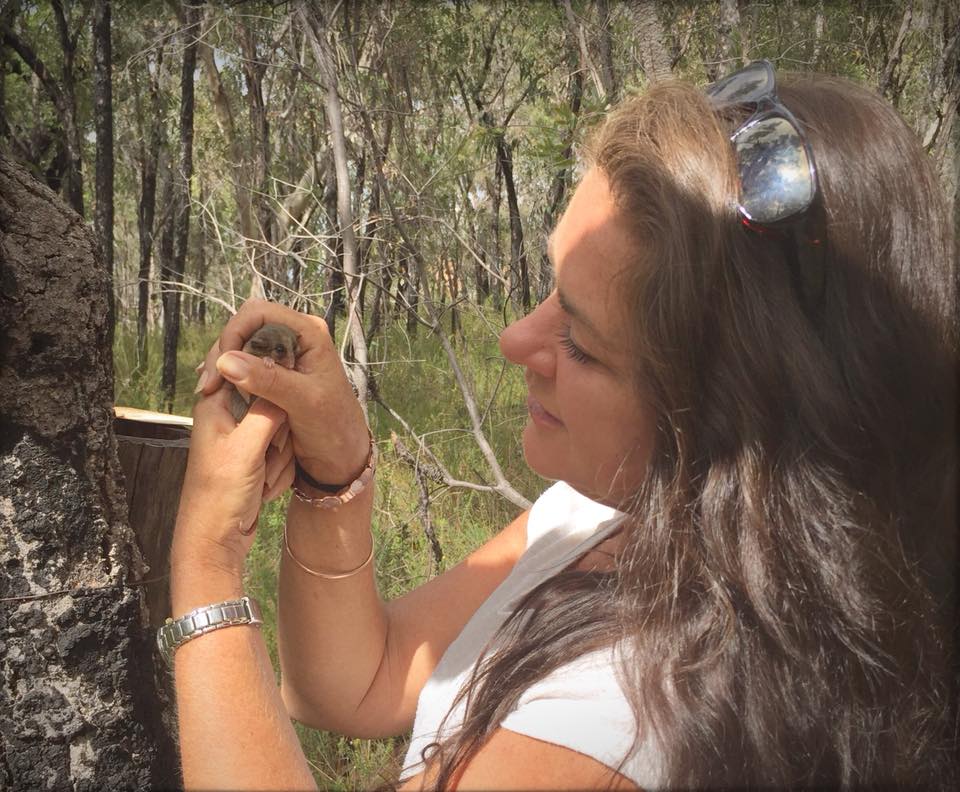
- Australian Government Individual Landcarer Award
- Australian Government Partnerships for Landcare Award
- Australian Government Landcare Farming Award
- Coastcare Award
- Landcare Community Group Award
- Woolworths Junior Landcare Team Award
- KPMG Indigenous Land Management Award
- Young Landcare Leadership Award.
- Julie Holstegge
- Marg Bull
- Winsome Lambkin
- Sydney Wildlife (Sydney Metropolitan Wildlife Services)
- Australian Association of Bush Regenerators-AABR
- The Protecting Little Llangothlin (RAMSAR) for Future Generation Project
- Martin Royds
- Stuart Austin
- Graham Strong
- Budgewoi Beach Dunecare
- Clean4shore
- Lennox Head Landcare
- Upper Lachlan Landcare Grazing Group
- Mulgoa Valley Landcare Inc.
- Upper Mooki Landcare Inc
- Bexhill Public School
- Ivanhoe Central School
- Grose View Public School
- Nari Nari Tribal Council
- Hunter Aboriginal Riverkeeper Team (H.A.R.T)
- Joel Orchard, Young Farmers Connect
- Gabrielle Stacey, Fern Creek Landcare
- Elisha Duxbury Macquarie University & Greater Sydney Landcare Network
- Brian Hilton
- Deb Tkachenko
- Louise Turner Western Landcare NSW
The Sydney Edible Garden Trail 2022: March 26-27 - Local Sites

Peek inside some of Sydney’s private backyard fruit and veggie gardens this March, and discover their secrets to living sustainably.
Whether you’re a new or experienced gardener, the best way to learn how to grow juicy fruit and vegetables in your own backyard is to talk to a gardener who’s already doing it. Sydneysiders will have the opportunity to do this over the weekend of 26 & 27 March 2022 when over 50 suburban, community and school gardens will open for the Sydney Edible Garden Trail (SEGT).
Matthew Elphick, one of the garden hosts who participated last year, was inspired to reopen his garden again this year. He’s looking forward to the 2022 trail, saying “It was so wonderful to open last year and have people come through the garden and see how excited they are. You get to see the garden through their eyes, things that you don’t think much about, they find amazing. It’s such a great opportunity to meet like-minded people.”
With the motto “We don’t just grow food, we grow sustainable communities”, SEGT arranges for gardens to open to the public and allocates profits from ticket sales towards building stronger community and school gardens through a grants program with 8 gardens provided with grants in 2021.
This year the trail is extending to the wider Sydney metropolitan area with many new gardens included. Tickets are now on sale at https://sydneyediblegardentrail.com/tickets/
Those in our area listed so far for the 2022 edition of SEGT include:
Newport Community Garden
We are a membership based Community Garden of local neighbours who get together to learn about organic gardening, sustainable living, socialise and have a good time!
NCG has been running for over 8 years and from humble beginnings is now a vibrant, sustainable and inviting space with over 35 garden beds, compost bays, worms farms and native bee hive, green house, water tanks and garden shed.
We grow organic fruits, vegetable and herbs. We cultivate our compost, make our own natural pesticides and grow from seeds saved from our seasonal harvest.
It’s not just hard work, we are very social too and always finish the day with a cuppa and chat with local community members.
In November 2021 Newport Community Garden were announced as one of fifty SEGT GRANT RECIPIENTS 2021.
The grant will be used to attract local birdlife and bees by planting some native bush food plants and others native plants.
Newport Community Garden Profile of the Week
“The glory of gardening: hands in the dirt, head in the sun, heart with nature. To nurture a garden is to feed not just on the body, but the soul.” - Alfred Austin
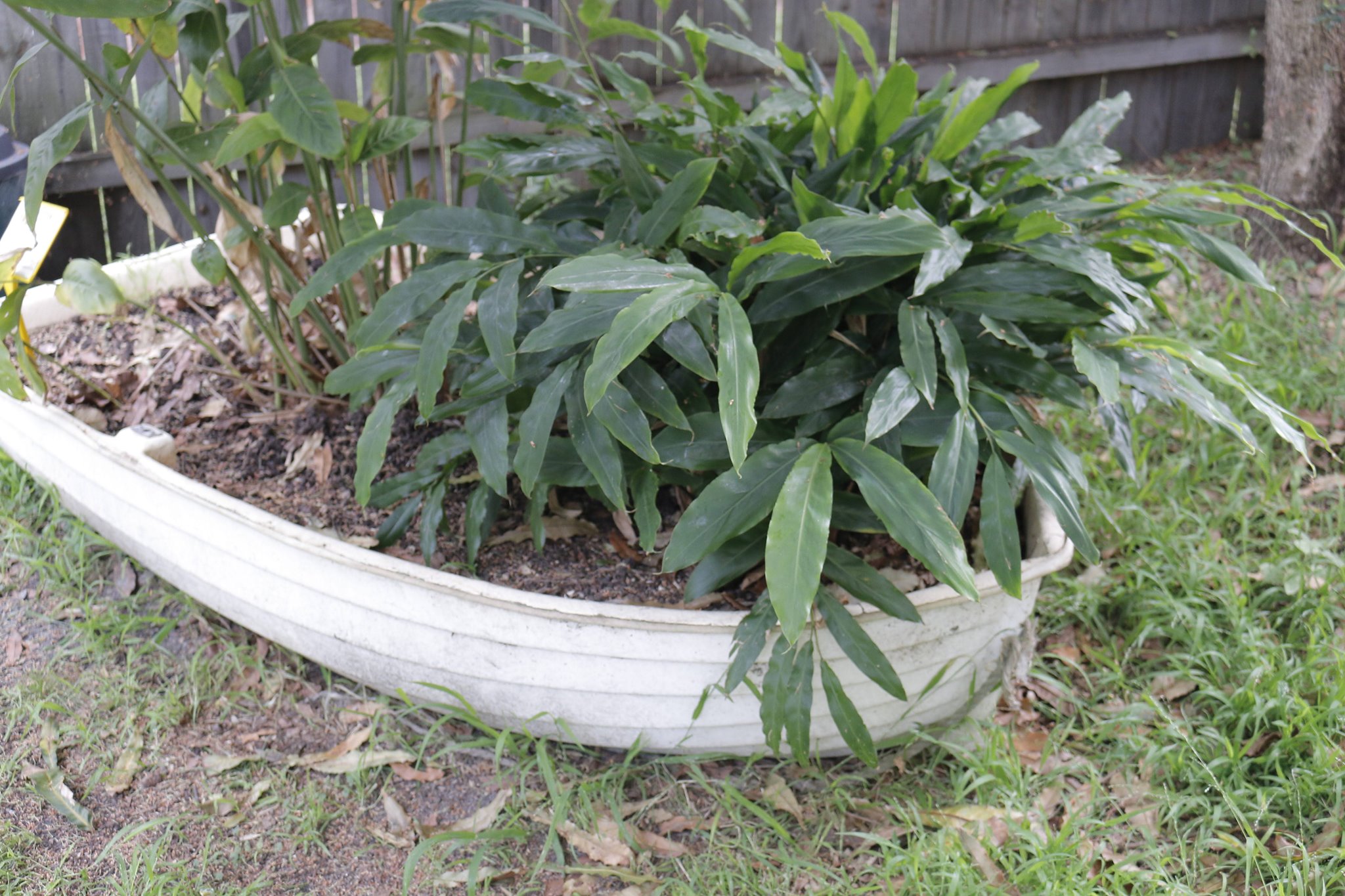
Great reuse of an old boat in the Newport Community Garden
Local Wildlife Rescuers And Carers State That Ongoing Heavy Rains Are Tough For Us But Can Be Tougher For Our Wildlife:
- Birds and possums can be washed out of trees, or the tree comes down, nests can disintegrate or hollows fill with water
- Ground dwelling animals can be flooded out of their burrows or hiding places and they need to seek higher ground
- They are at risk crossing roads as people can't see them and sudden braking causes accidents
- The food may disappear - insects, seeds and pollens are washed away, nectar is diluted and animals can be starving
- They are vulnerable in open areas to predators, including our pets
- They can't dry out and may get hypothermia or pneumonia
- Animals may seek shelter in your home or garage.
You can help by:
- Keeping your pets indoors
- Assessing for wounds or parasites
- Putting out towels or shelters like boxes to provide a place to hide
- Drive to conditions and call a rescue group if you see an animal hit (or do a pouch check or get to a vet if you can stop)
- If you are concerned take a photo and talk to a rescue group or wildlife carer
There are 2 rescue groups in the Northern Beaches:
Sydney Wildlife: 9413 4300
WIRES: 1300 094 737
Please be patient as there could be a few enquiries regarding the wildlife.
Generally Sydney Wildlife do not recommend offering food but it may help in some cases. Please ensure you know what they generally eat and any offerings will not make them sick. You can read more on feeding wildlife here

Information courtesy Ed Laginestra, Sydney Wildlife volunteer. Photo: from Esther Andrews.
Aviaries + Possum Release Sites Needed

Asparagus Fern Flowering Now: Dispose Of This Weed To Stop The Spread
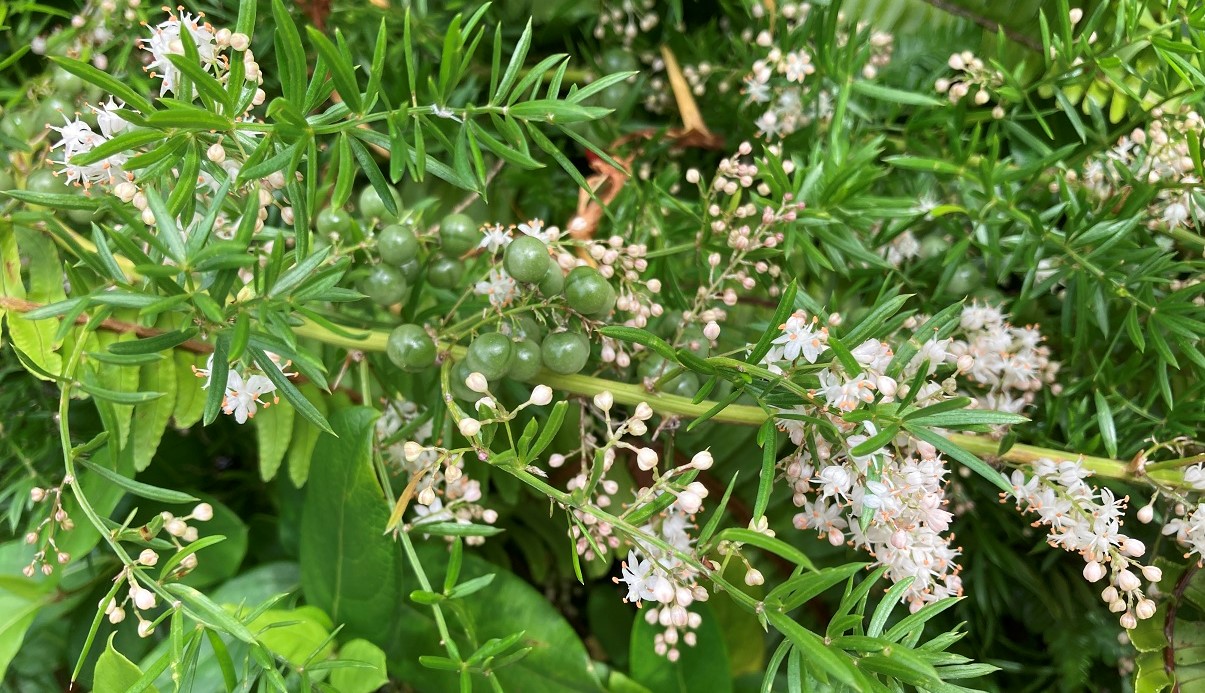
Sydney Wildlife Rescue: Helpers Needed

Corroboree Frogs Return Home
After The Fires: Popular Blue Mountains Sites Reopen
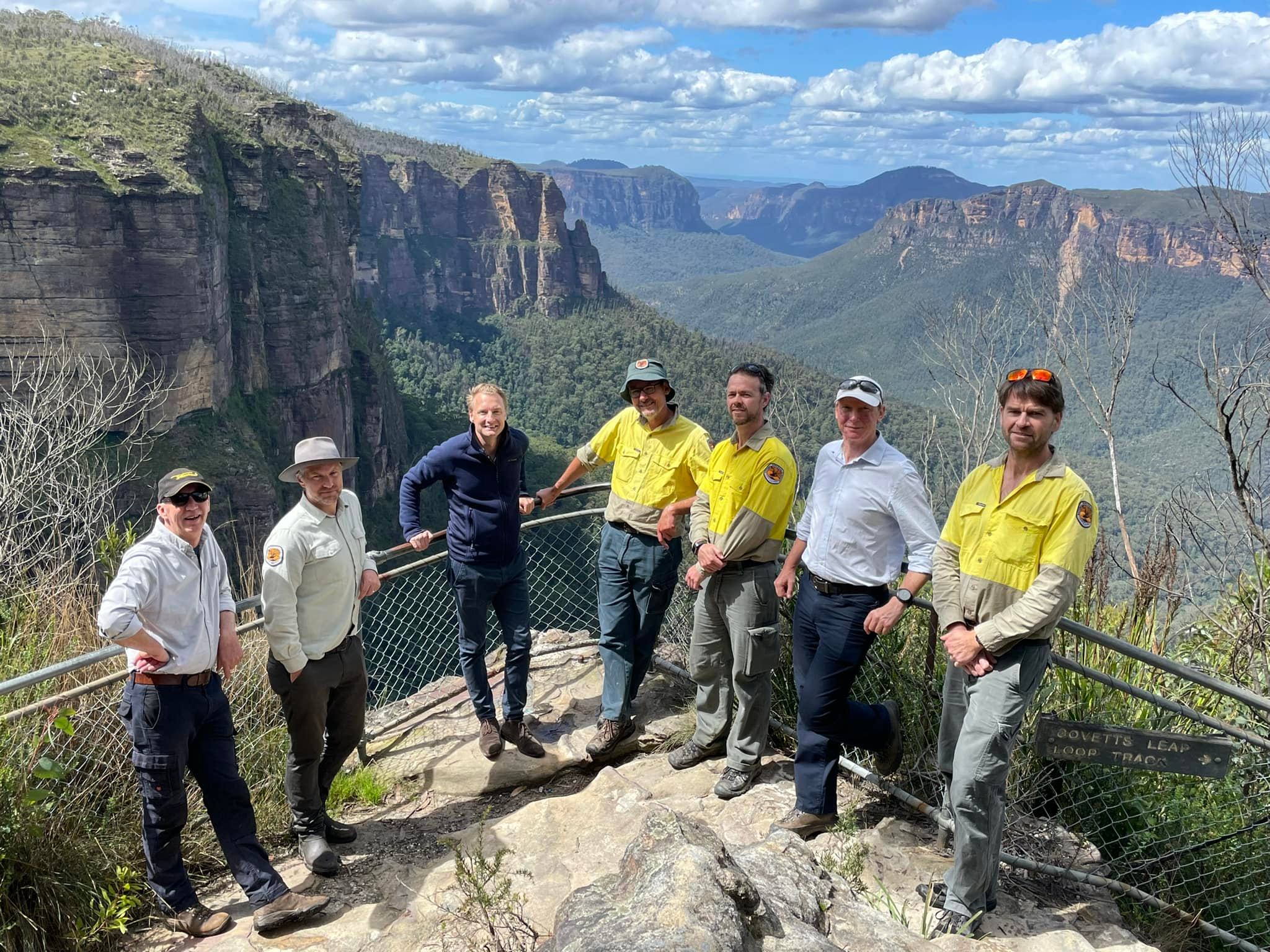
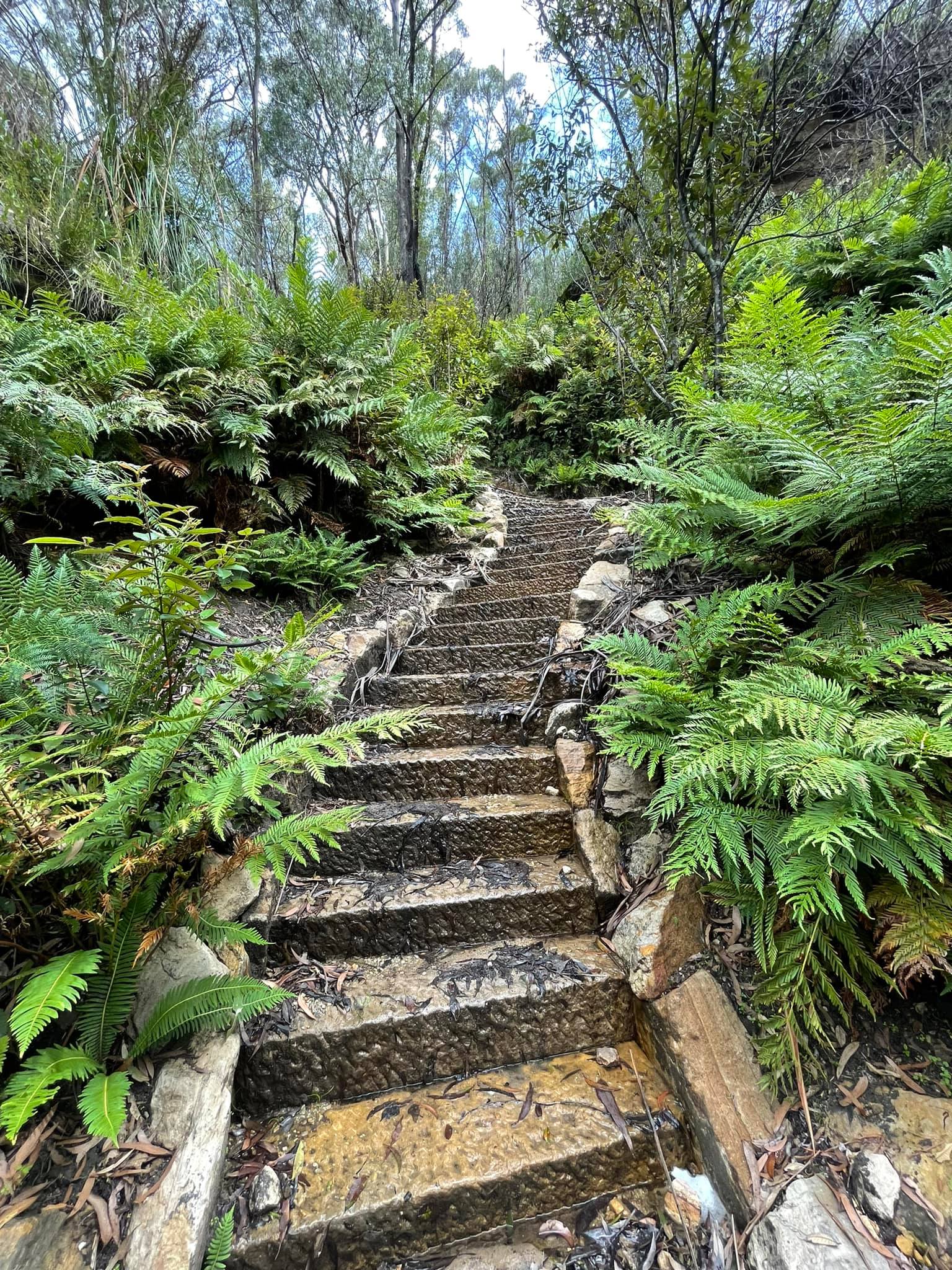
Floodplain Development Manual Update: Feedback Until April 4
- Lessons learned from previous floods and the application of a flood risk management process and manual since 2005.
- A range of work on managing natural hazards across government, including relevant national and international frameworks, strategies, and best practice guidance.
- A Flood Risk Management Manual.
- A range of new flood risk management guides for the Flood Risk Management Toolkit.
The Big Switch With Saul Griffith: Electrify Everything!
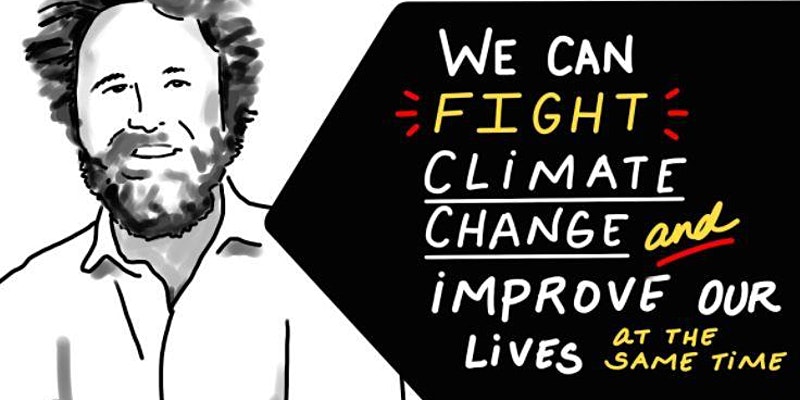 When: Wed, 23 March 2022; 6:30 PM – 8:00 PM
When: Wed, 23 March 2022; 6:30 PM – 8:00 PM Bushcare In Pittwater
Where we work Which day What time
Avalon
Angophora Reserve 3rd Sunday 8:30 - 11:30am
Avalon Dunes 1st Sunday 8:30 - 11:30am
Avalon Golf Course 2nd Wednesday 3 - 5:30pm
Careel Creek 4th Saturday 8:30 - 11:30am
Toongari Reserve 3rd Saturday 9 - 12noon (8 - 11am in summer)
Bangalley Headland 2nd Sunday 9 to 12noon
Bayview
Winnererremy Bay 4th Sunday 9 to 12noon
Bilgola
North Bilgola Beach 3rd Monday 9 - 12noon
Algona Reserve 1st Saturday 9 - 12noon
Plateau Park 1st Friday 8:30 - 11:30am
Church Point
Browns Bay Reserve 1st Tuesday 9 - 12noon
McCarrs Creek Reserve Contact Bushcare Officer To be confirmed
Clareville
Old Wharf Reserve 3rd Saturday 8 - 11am
Elanora
Kundibah Reserve 4th Sunday 8:30 - 11:30am
 Mona Vale
Mona Vale Mona Vale Beach Basin 1st Saturday 8 - 11am
Mona Vale Dunes 2nd Saturday +3rd Thursday 8:30 - 11:30am
Newport
Bungan Beach 4th Sunday 9 - 12noon
Crescent Reserve 3rd Sunday 9 - 12noon
North Newport Beach 4th Saturday 8:30 - 11:30am
Porter Reserve 2nd Saturday 8 - 11am
North Narrabeen
Irrawong Reserve 2nd Saturday 2 - 5pm
Palm Beach
North Palm Beach Dunes 3rd Saturday 9 - 12noon
Scotland Island
Catherine Park 2nd Sunday 10 - 12:30pm
Elizabeth Park 1st Saturday 9 - 12noon
Pathilda Reserve 3rd Saturday 9 - 12noon
Warriewood
Warriewood Wetlands 1st Sunday 8:30 - 11:30am
Whale Beach
Norma Park 1st Friday 9 - 12noon
Western Foreshores
Coopers Point, Elvina Bay 2nd Sunday 10 - 1pm
Rocky Point, Elvina Bay 1st Monday 9 - 12noon
Gardens And Environment Groups And Organisations In Pittwater
To really address climate change, Australia could make 27 times as much electricity and make it renewable
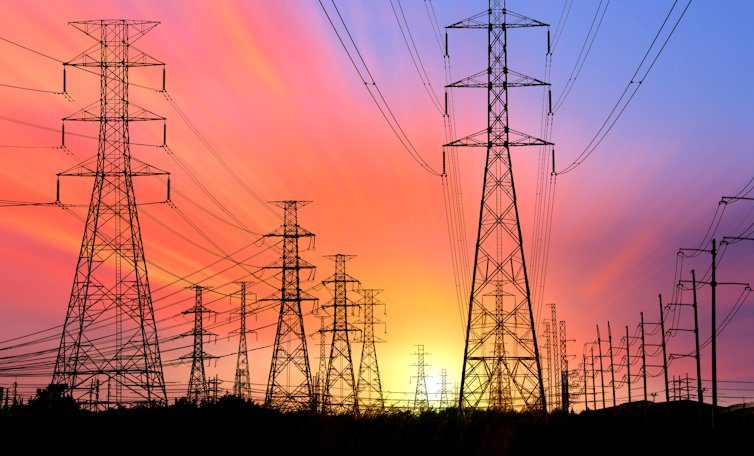
Australia’s electricity system is on the road to becoming 100% renewable as coal-fired power stations close and wind and solar takes their place.
But as a proportion of electricity consumed domestically, it’s on the road to more than 100% renewable. That’s because renewable power set to be produced in Australia’s north could be exported in ways such as via subsea cables.
And if we get really serious about bringing down global emissions we will be doing much, much more.
In a newly-published study carried out as part of a multi-disciplinary team under the Zero-Carbon Energy for the Asia-Pacific project we analyse the potential for Australia to produce and export not only clean energy but also green value-added commodities, eliminating emissions that would have taken place elsewhere.
We find there is substantial scope for Australia to use its solar, wind and land endowments to become a major exporter of green electricity, green hydrogen, green ammonia, and green metals.
Australia’s Exports Are Emission-Intensive
Australia is the world’s largest exporter of coal and liquefied natural gas, mostly to countries in the Asia-Pacific. Each year, the emissions from overseas use of these fuels vastly exceed the total emissions from Australia itself.
Australia is also a major producer and exporter of other commodities that go on to be used in emissions-intensive ways in destination markets - among them iron ore, bauxite and alumina.
The figure below shows our calculations of the “consequential emissions” associated with Australia’s exports of several key commodities.
To avoid double counting, coking coal is not shown. Its emissions are instead included in the emissions tied to the overseas use of Australian iron ore.
The consequential emissions associated with the key commodity exports shown below account for about 8.6% of total greenhouse gas emissions in the Asia-Pacific and about 4% of global emissions.
While importing countries are certainly not absolved from responsibility for emissions from use of Australian exports, the calculations show just how important Australia’s upstream role is.
Australia Could Export Zero-Carbon Products And Energy
To get an indication of the production possibilities, we calculated the land area and energy requirements for an indicative scenario in which Australia:
exports the same quantity of energy in green electricity and hydrogen as it exports in thermal coal and liquefied natural gas.
processes currently-exported iron ore, bauxite, and alumina into green steel and green aluminium for value-added export.
Using 2018–2019 data, we calculate that about 2% of Australia’s land mass would be needed for solar and wind farms. This is a large area, although small relative to the area currently dedicated to livestock grazing and other agricultural activities.
The energy requirement would also be large, involving about 7,000 terawatt-hours of solar and wind generation per annum – about 27 times Australia’s current electricity output and use.
Water would be needed for electrolysis to produce hydrogen. This could be largely based on desalination of seawater, an activity that would involve minimal additional energy requirements.
The best locations for mega-scale solar and wind farms for export commodities are commonly in arid or semi-arid areas outside the most productive agricultural zones, so negative implications for food supply could be avoided.
Land and electricity requirements under a zero-carbon export scenario
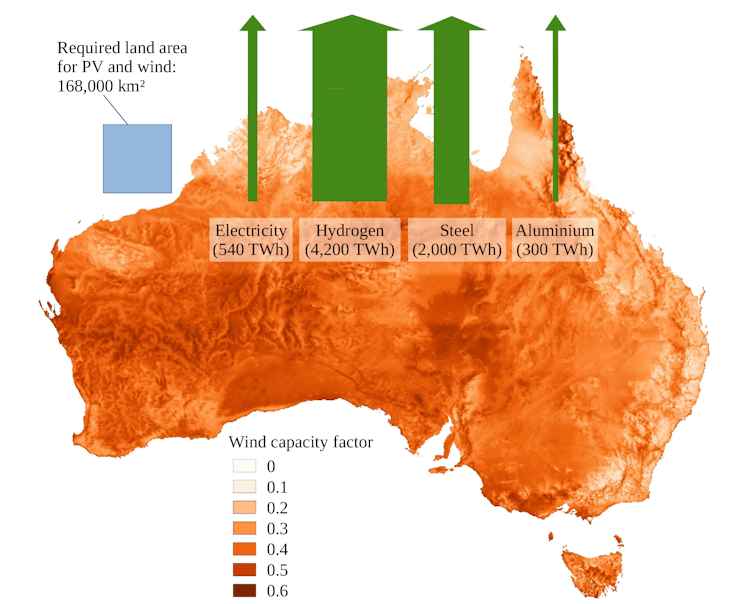
Key priorities include ensuring that the sustainable development opportunities for Indigenous communities from these projects are harnessed and protecting the natural environment.
Reducing the need for new coal mines and other fossil fuel projects would be a major environmental benefit.
There’s Private Sector Interest
Australia is already a world-leader in the adoption of solar and wind power, and there is substantial private-sector interest in zero-carbon export opportunities.
Proposals for exports of solar electricity (Sun Cable), green hydrogen (including Fortescue Future Industries and the HyEnergy Project) and green ammonia (including the Asian Renewable Energy Hub, Western Green Energy Hub, and Yara Pilbara) are pointing the way.
The combined renewable electricity peak capacity for these projects alone (>100 GW) already exceeds Australia’s present electricity generating capacity by a considerable margin.
They Are Opportunities We Should Grab
Achieving the rates of investment required to realise our clean commodity export potential will require world-class policy.
In 2019 Australia released a National Hydrogen Strategy, and most states and territories have similar plans. The Technology Investment Roadmap, the Australian Renewable Energy Agency and the Clean Energy Finance Corporation are further examples of “green industrial policy” at work.
To facilitate access to premium markets, we need to ensure it is easy for new industries to prove that their production is clean. Australia is currently undertaking efforts to develop hydrogen certification.
International regulatory collaboration is essential. Negotiations for an Australia-Singapore Green Economy Agreement are a step in the right direction.
In October 2021 Australia announced a target of net-zero emissions by 2050.
Our research finds domestic emissions are only part of the story. Australia has an opportunity to contribute to global net-zero emissions via clean exports.![]()
Paul Burke, Professor, Crawford School of Public Policy, Australian National University; Emma Aisbett, Fellow, Australian National University, and Ken Baldwin, Inaugural Director, ANU Grand Challenge, Zero-Carbon Energy for the Asia Pacific, Australian National University
This article is republished from The Conversation under a Creative Commons license. Read the original article.
Surfing Towards Coastal Ecosystem Protection
March 14, 2022
Scientists at the University of Portsmouth believe a strategy used to protect popular surfing spots could now be more widely adopted to help preserve endangered coastal environments. A new research paper, published this week in Trends in Ecology & Evolution, says, 'wave reserves', initially aimed at protecting treasured surf spots, are also a way to ensure the conservation of ecologically valuable coastal areas.
The concept of wave reserves has gained popularity over the past few decades. The first wave reserve was established in Bells Beach, Australia in 1973 by surfers keen to defend their prized waves from damaging human activity. But it is especially since the beginning of the 2000s that the surfing community has established dozens of wave reserves around the world.
Waves can be affected by any number of factors such as the dredging of the seabed, building of dykes, changes in sediment regime and ocean acidification. The strategy has been so successful that in some locations there are now several large wave reserves being planned, with support from international NGOs such as Save The Waves.
The research from the University of Portsmouth finds this approach could help low and middle-income countries achieve global sustainability goals. Waves are not just important to surfers, they are also a vital part of the marine ecosystem. Waves play an active role in the gas exchange between the ocean and the atmosphere and in the movement of sediments. They also provide a favourable living environment for many aquatic species.
During the last 20 years the creation of wave reserves as a measure to preserve sports and recreational activities has aligned with initiatives to conserve the coastal environment. What is emerging is a win-win situation.
Academics believe a desire for corporations to put money behind surfing projects could also be a useful funding stream that benefits the coastal environment. The growing surf market, and its adoption as an Olympic sport could help generate significant revenues for conservation.
Gregoire Touron-Gardic, from the Centre for Blue Governance at the University of Portsmouth, says: "What is new and exciting -- in addition to seeing increasingly large reserves and with legal protection statuses -- is the private sector is now interested in wave reserve projects. We are now seeing sports, cosmetics and drinks brands finance international ocean conservation programs. Brands wish to be associated with responsible ecological and social projects, whilst benefiting from the image of surfing."
Touron-Gardic predicts wave reserves will become a popular tool of coastal conservation in countries recognised as surfing destinations, such as the Maldives, Indonesia, Costa Rica, Fiji and Chile. The reserves make it possible to combine preservation of the coastal environment, local economic prosperity and human well-being.
Professor Pierre Failler, Director of the Centre for Blue Governance, University of Portsmouth says, "The potential impact of wave reserves on the future of sustainable ocean management is huge. Wave reserves can become the foundation for an environmental approach to sport tourism. When large enough, wave reserves will allow low- and middle-income countries to increase their relatively weak area-based conservation systems at a lower cost, and therefore progress in achieving their international commitments such as the UN Sustainable Development Goals.
Professor Failler, who is also UNESCO Chair in Ocean Governance, says: "It is achievable and accessible initiatives like these that will help improve the governance of the world's oceans. There are many challenges to overcome during the UN Decade of Ocean Sciences for Sustainable Development and collaboration is key to safeguarding the future of our oceans."
Grégoire Touron-Gardic, Pierre Failler. A bright future for wave reserves? Trends in Ecology & Evolution, 2022; DOI: 10.1016/j.tree.2022.02.006
1.7 million foxes, 300 million native animals killed every year: now we know the damage foxes wreak
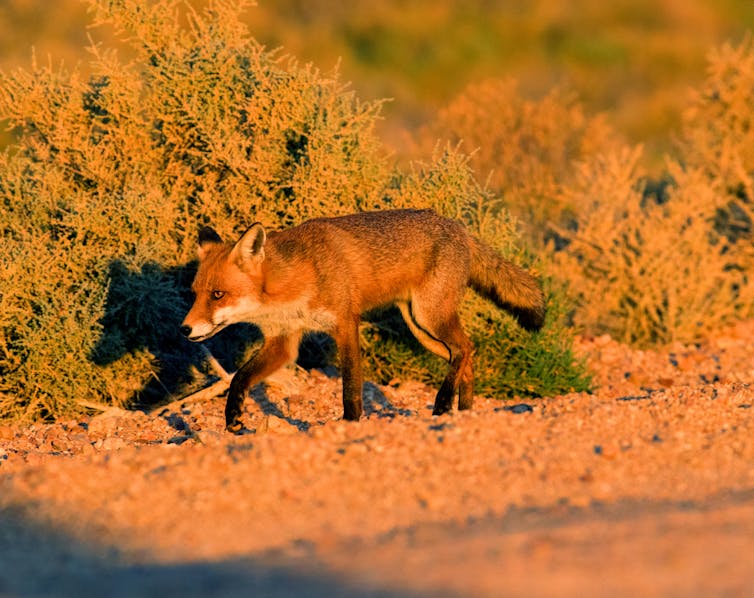
Foxes kill about 300 million native mammals, birds and reptiles each year, and can be found across 80% of mainland Australia, our devastating new research published today reveals.
This research, the first to quantify the national impact of foxes on Australian wildlife, also compares the results to similar studies on cats. And we found foxes and cats collectively kill 2.6 billion mammals, birds and reptiles every year.
This enormous death toll is one of the key reasons Australia’s biodiversity is suffering major declines. Cats and foxes, for example, have played a big role in most of Australia’s 34 mammal extinctions, including the desert rat-kangaroo which rapidly declined once foxes reached their region.
Australia must drastically scale up the management of both predators, to give native wildlife a fighting chance and to help prevent future extinctions.
Australia Is Home To 1.7 Million Foxes
European colonisers brought foxes (and cats) to Australia. From 1845, foxes were released into the wild in Victoria for the “sport” of hunting them on horseback with a pack of hounds.
Fox populations soon exploded, thanks to the deliberate introduction of rabbits and hares in the 1800s. Rabbits and hares are not only a food source for foxes, they also eat the vegetation that native animals need for food, habitat, and to hide from predators. They continue to boost fox numbers today.
Our study estimates there are now 1.7 million foxes in Australia, spread across 80% of the mainland and on 50 Australian islands. They’re largely absent from tropical northern Australia and Tasmania.
By comparison, cats occur over more than 99.9% of the country, including on far more islands.
Fox densities are highest in temperate mainland regions, including forests and farms, and near urban areas where food and shelter are abundant. The Victorian government estimates there are as many as 16 foxes per square kilometre in Melbourne.
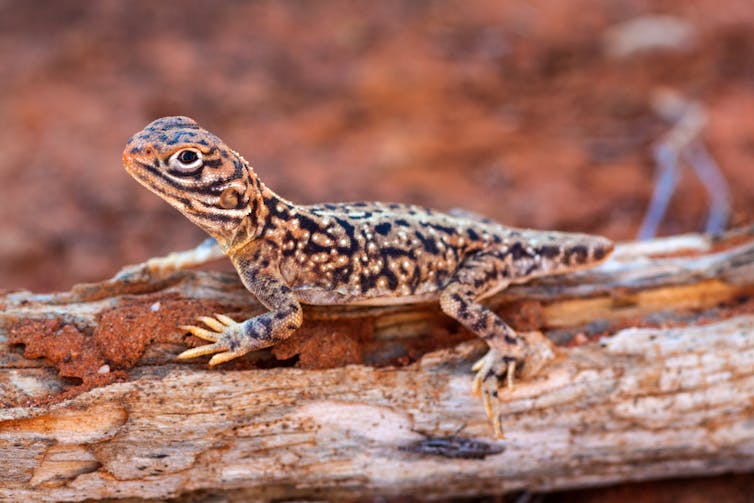
What Are Foxes Eating?
The 300 million native animals that foxes kill every year consists of:
reptiles: foxes kill 88 million reptiles each year, and all are native. They’ve been recorded killing 108 different species – or 11% of all Australian reptile species – including the tjakura (great desert skink) and loggerhead turtle
birds: foxes kill 111 million birds each year, and 93% of these are native. They’ve been recorded killing 128 species – or 18% of all Australian bird species – including the mallee-fowl and little penguin
mammals: foxes kill 368 million mammals each year, and 29% of these are native. They’ve been recorded killing 114 species, or 40% of all land mammal species and half of all threatened mammal species. This includes the mankarr (greater bilby), quenda (southern brown bandicoot) and warru (black-footed rock-wallaby).
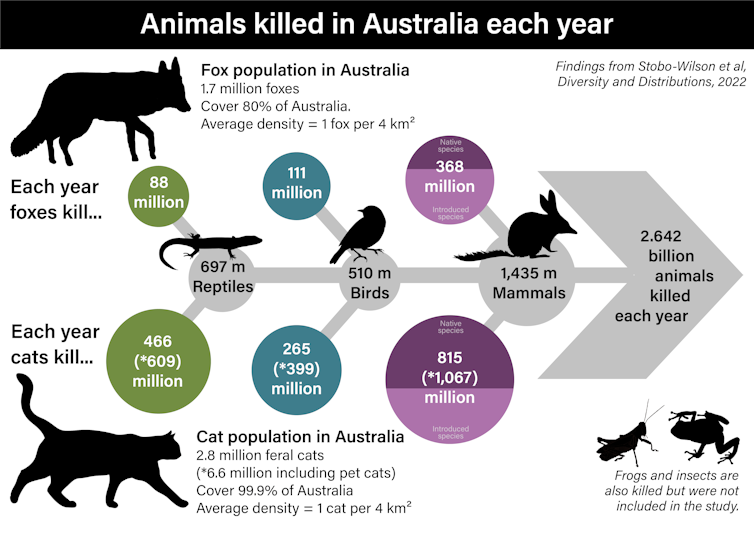
Foxes also kill another 259 million non-native invasive animals every year, predominately house mice and rabbits. They also kill livestock, such as lambs, piglets and chickens.
While rabbits and house mice form a major part of fox diets, there’s no evidence foxes (or cats) limit their numbers. Changes in rabbit and mice populations are largely driven by climate fluctuations.
Our findings are underpinned by modelling data assembled from almost 100 field studies. This included 49,458 fox poo and stomach samples, and fox density estimates at 437 locations.
Foxes are also known to eat bird and reptile eggs, and threaten the breeding success of many turtle species. However, we didn’t tally their impact on turtle eggs (or on fish, frogs or insects) because of insufficient data - they’re highly digestible and often hard to identify in fox poo.
Carrion (dead animals) account for an average of 10% of fox diets, but we excluded carrion in the estimated numbers of animals killed.
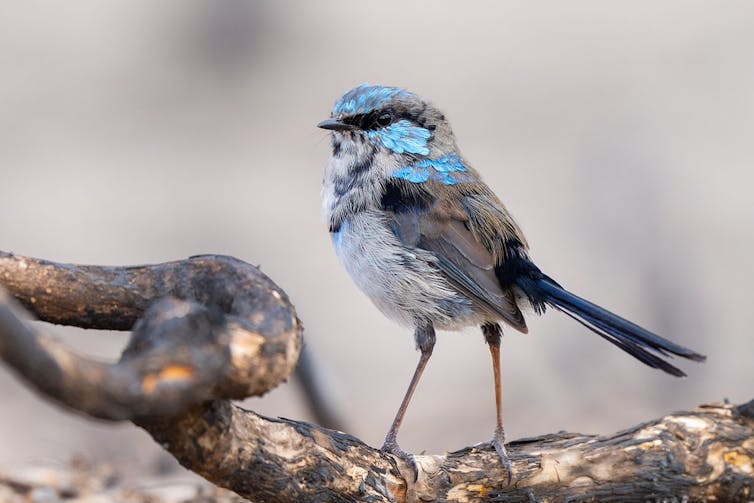
Foxes And Cats: A Deadly Combination
Although they eat many of the same species, foxes take larger prey than cats and have a bigger toll on kangaroos, wallabies and potoroos.
Cats eat smaller prey, so eat a lot more of them. Nationally, feral cats kill about five times more reptiles, two and a half times more birds and twice as many mammals than foxes.
In total, feral cats kill 1.5 billion animals every year (not including invertebrates and frogs). Pet cats kill another 500 million animals.
The impacts of both predators are concentrated in some regions more than others. And although cats kill more animals overall nationally, in some areas foxes take a greater toll.
This includes the Warren and Jarrah Forest in Western Australia, the Eyre and Yorke Penninsula in South Australia, across Victoria and in NSW’s Blue Mountains.
This is why foxes take a larger toll on forest animals such as possums and gliders, and kill over 1,000 animals per square kilometre each year in these areas.
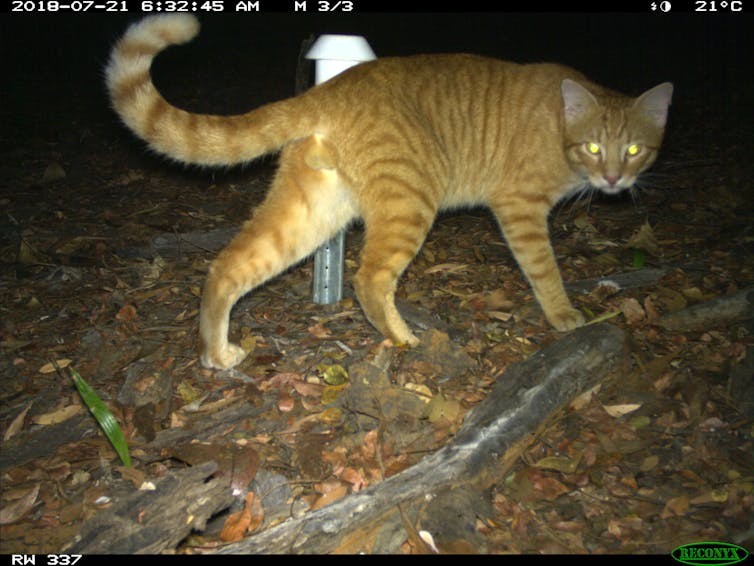
To understand and manage these threats, it’s essential to take the cumulative impacts of both introduced predators into account. Many species fall prey to both cats and foxes.
Each day across Australia their combined death toll includes 1.9 million reptiles, 1.4 million birds and 3.9 million mammals.
So What Needs To Change?
The only way to stem these losses, and prevent the extinction of many vulnerable species, is to step up targeted and integrated cat and fox management.
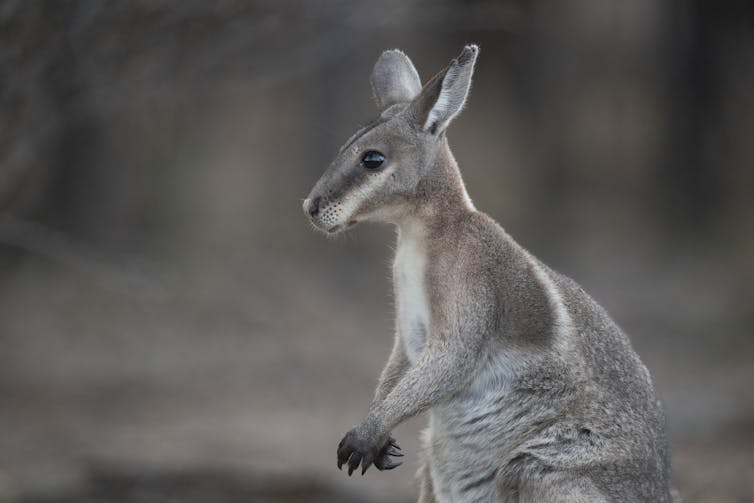
Cat and fox eradication programs have had success in fenced areas and on islands. For example, cat eradication on Dirk Hartog Island is enabling many native animals to be reintroduced.
And long-term broad-scale management programs have enabled the recovery of threatened species in wider landscapes, such as the Bounceback Program helping yellow-footed rock wallabies and other wildlife in SA’s Flinders Ranges.
Our new research highlights the urgent need to increase investment for cat and fox management across Australia. Management will need to be large-scale and strategically coordinated as both species breed like rabbits, so to speak, and travel great distances.
This means patchy, or small-scale lethal programs can allow their numbers to quickly rebound.
We also need to protect and recover habitat for native animals. Evidence shows good habitat supports healthier native animal populations and gives them more places to hide from predators. ![]()
Jaana Dielenberg, University Fellow, Charles Darwin University; Alyson Stobo-Wilson, Postdoctoral Research Associate, Charles Darwin University; Brett Murphy, Associate Professor / ARC Future Fellow, Charles Darwin University; John Woinarski, Professor (conservation biology), Charles Darwin University; Sarah Legge, Professor, Australian National University, and Trish Fleming, Professor, Murdoch University
This article is republished from The Conversation under a Creative Commons license. Read the original article.
Thinking of buying an electric vehicle for your next car? Here’s the market outlook and what to consider

As petrol prices soar and climate change impacts make themselves felt, many people are likely wondering if their next car should be a fully electric vehicle.
Yes, the upfront costs are generally higher – but what does the future hold? Will prices fall in coming years and what costs do you need to factor into your decision?
The unfortunate truth is unless policy settings in Australia change, we shouldn’t expect a significant increase in the number of electric vehicles (EVs) available to Australians over the coming years.
It’s important we all start to make the switch to this cleaner technology, but unfortunately that choice is not available to many Australian households and businesses due to a lack of local, supportive policy.
Costs To Consider
EVs in Australia are currently A$15,000-20,000 more expensive than petrol or diesel cars. But in some market segments – like some sub-premium sedans priced between $60,000 and $75,000 – they are already at parity.
Several manufacturers have promised to bring more supply to the Australian market in 2022 but many of these vehicles were meant to be here in 2021 (with their arrival pushed back).
If you’re thinking of making the switch to an EV, here’s what to consider:
don’t focus only on the price tag. With petrol prices now pushing past $2 per litre, many Australians will find themselves paying more than $2,000 in fuel each year for every car they own. Electric vehicles can be charged for the equivalent of around $0.20 per litre, or even cheaper when using your home solar. These savings add up, totalling more than $20,000 over the life of the vehicle.
EVs are cheaper to maintain, and in some cases have no servicing costs. This equates to thousands of dollars potentially saved over the life of the vehicle.
what about charging? Anywhere you have access to a standard power point you can charge an EV. With cars parked 90% of the time, and mainly driven fewer than 50 kilometres per day, a couple of hours’ charging is more than enough for most. If you want a quicker charge, you can install a wall charger in your garage. And if you park on the street you can use the growing list of public fast chargers across the country or ask your workplace to install a charger.
The reality, though, is that if there’s no change to policy settings, we can expect the EV market in Australia to stay much the same this year and for many years to come.
This means many Australians won’t have a choice but to continue to pay for expensive imported fuel, instead of using cheap Australian energy to power our vehicles.
Are All EVs Expensive?
There’s a vast range of EV models. It’s just that most of them aren’t sold in Australia.
One of Australia’s disadvantages is we are a market for right-hand-drive vehicles, and many European and American EVs just aren’t built that way. The UK is also a right-hand-drive market, where people have similar average incomes and quality of life compared to Australia. But the EV market there is very different with more than 160 EV models compared with around 50 in Australia.
The key difference is the UK has a (conservative) government that has embraced the technology and understands the broader economic benefits of making EVs easy for people to get and run.
Yes, Australia has boosted EV charging infrastructure but that’s not enough to encourage manufacturers to bring more models to this country (which would help get more affordable EVs on the market).
How would the Australian market look if we did have supportive policy? Well, there are about 80 million cars sold worldwide each year, around 1 million of which are sold in Australia. So we are about 1.3% of the global car market.
There were about 6.6 million EVs sold worldwide in 2021. So 6.6 million x 1.3% equals about 85,000 cars. That’s 85,000 EVs that should have been sold here last year if our market was in line with global trends.
But in fact, the number of EVs sold here was just over 21,000 in 2021. So we are about a quarter of the size we should be.
There’s plenty of demand for EVs in Australia, we just cannot get enough delivered because we haven’t got the right policy settings.

What Policies Could Help?
Policies that would help make EVs more affordable in Australia include:
incentives to bring down the upfront cost of EVs. Some people say this is subsidising rich people but clever policy would support jobs in the Australian energy market. It’s estimated we spend more than A$30 billion on foreign fuel for our cars every year. Redirecting that money to powering EVs would help keep those billions in the country, and support local Australian energy jobs.
we don’t have a fuel efficiency standard, putting us in poor company with Russia as two of the last remaining major economies without such standards. That’s why people say Australia is a dumping ground for vehicles that are illegal to sell overseas. The markets that have fuel efficiency standards are getting all of the EV supply.
having a clear target of EV sales for the next five to 15 years would support achieving net zero by 2050 – in other words, selling the last petrol or diesel car by the mid-2030s.
So What’s The Market Outlook?
Not much will change in Australia unless there’s a change in policy. We are competing with markets that have the right policies to stimulate EV sales. The manufacturers are, of course, going to prioritise supply there.
There will be small increases in EV sales in Australia every year. But it will take a number of years for the supply of these new vehicles to ramp up.
I’m sorry to be the bearer of bad news. And I do hope your next vehicle purchase is an EV, after considering all of the costs over the life of the vehicle. It is the right thing to do for the climate and the long-term savings are attractive, especially if fuel prices continue to be so volatile.
Unfortunately, though, Australians should not expect EVs to suddenly become cheap and easy to buy here in the next couple of years – unless policy changes.![]()
Jake Whitehead, Tritum E-Mobility Fellow & Advance Queensland Industry Research Fellow, The University of Queensland
This article is republished from The Conversation under a Creative Commons license. Read the original article.
It may not be cute, but here’s why the humble yabby deserves your love
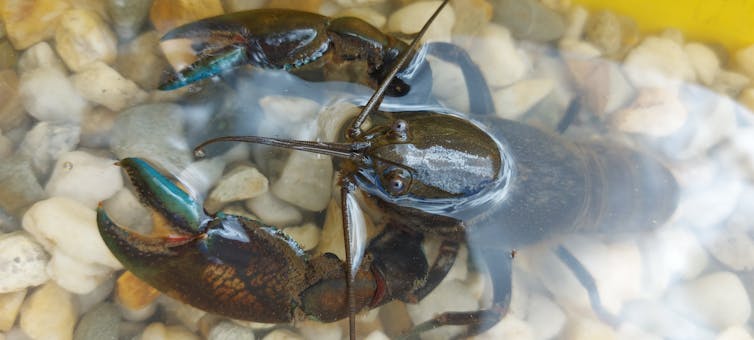
Am I not pretty enough? This article is part of The Conversation’s series introducing you to Australia’s unloved animals that need our help.
For children growing up in rural areas, going “yabbying” in farm dams is a rite of passage. The common yabby (Cherax destructor) is the most widely distributed Australian crayfish, inhabiting rivers and wetlands across southeast Australia.
And although the humble yabby is not as cute and cuddly as some better-known Australian icons, from an ecosystem perspective, we argue they may be more important.
Yabbies are a staple food for platypus, many waterbird species, and fish such as Murray cod and golden perch. And yabbies’ diet is largely made up of algae, detritus (dead organic material) and small animals. This means they link energy from the very bottom of the food chain to apex predators at the top.
And yet, little is known how their diets influence their growth and alter their quality as a food source. Our recent research starts to fill this critical gap.
We found yabbies in wetlands are better food source for fish than those in rivers, because wetland yabbies eat more foods rich in high-quality fatty acids. While more research is needed, these results show how higher quality yabby diets can increase the total biomass of predators, such as Murray cod, that riverine ecosystems can support.
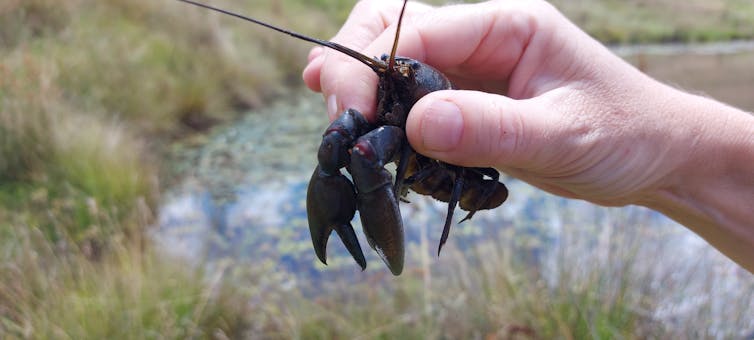
Untangling The Food Web
Food webs describe what eats what within ecological communities and provide a useful way to illustrate how energy moves through the environment.
But it’s more complex than big fish eats little fish. Within food webs, organisms can be lumped into two groups:
- autotrophs: organisms that obtain energy from the sun via photosynthesis, such as plants
- heterotrophs: organisms that obtain energy by eating other organisms, such as bacteria, fungi, and animals.
Algae fall in to the first group, providing a high-quality energy pathway in food webs because they can synthesise so-called “long-chain polyunsaturated fatty acids”: omega 3 and omega 6.
If you grew up in the 1980s you’re probably familiar with the term “polyunsaturated fatty acids” from its association with margarine (though few probably understood its relevance back then). Today, we more often hear the term around seafood.
We’re encouraged to eat oily fish because of the omega 3 and omega 6 they provide, which the body needs for brain function and cell growth. We source these fatty acids from fish thanks to algae, which underpins many aquatic food webs. Fatty acids are essential for the growth of all animals, including yabbies.
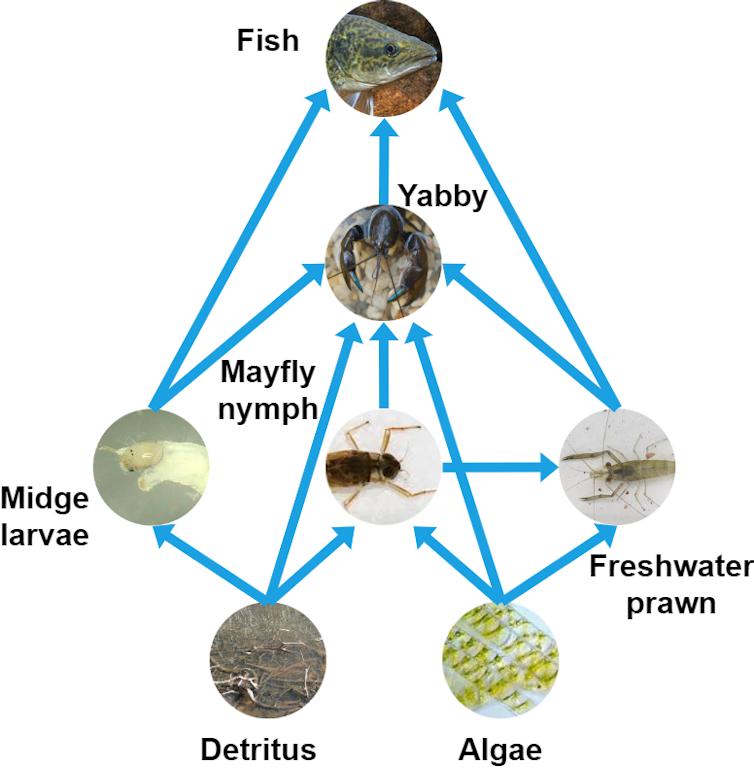
The other primary energy source in freshwater comes from detritus – organic debris and decomposing material. In wetlands and rivers, detritus accumulates from falling leaves and branches along banks, which can be washed into rivers during high flows.
But while detritus is often abundant, it’s considered poorer quality because it’s difficult to digest and has low concentrations of some important fatty acids. And in food webs, poor quality food provides less bounce for the ounce, so to speak.
The yabby is an omniovore - algae, detritus and other animals are its food, but we know little about how these different energy sources affect yabby growth and survival – or how it might affect animals that rely on yabbies for food.
You Are What You Eat
Our research investigated how different quality fatty acid diets affected yabby growth, and how this might influence other animals up the food chain.
We found yabbies fed poor quality diets in the laboratory, made up of only dead plant matter, barely grew at all. These yabbies also represented a poor-quality food resource for predators.
In contrast, yabbies fed mixed diets rich in high quality polyunsaturated fatty acids grew the most – more than doubling in mass over a 70-day trial. They also retained higher concentrations of these fatty acids in their body tissue, making them a good food resource for other animals.
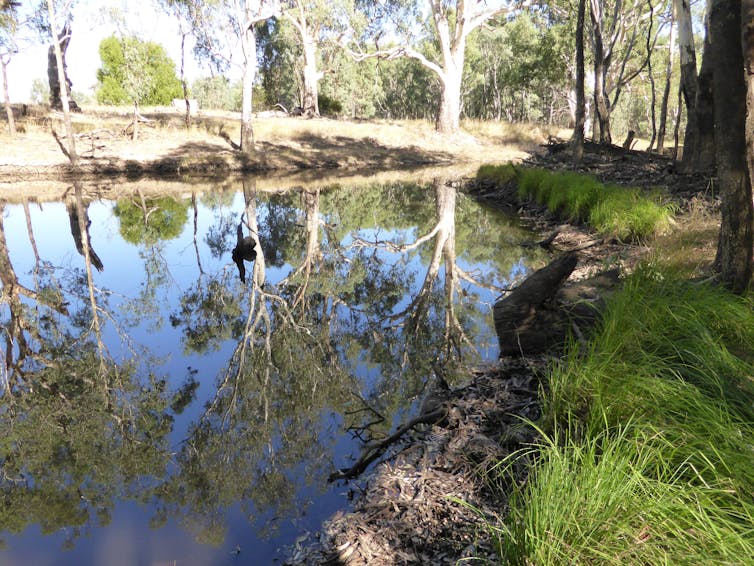
Yabbies are tough. They’re well adapted to Australia’s extremes, capable of surviving dry conditions by lying dormant in burrows dug in dried waterways. During wetter periods, they can travel long distances in search of a new home – usually wetlands or rivers.
So how might their environment affect their diet? We found wild yabbies that live in wetland habitats ate foods with higher concentrations of these fatty acids compared to yabbies that live in rivers.
And as with our laboratory fed yabbies, wild wetland yabbies eating high quality foods also represented a better food option for fish than riverine yabbies. This is likely due to wetlands containing a higher proportion of diatoms (single-celled algae) and green algae, which both synthesise long-chain polyunsaturated fatty acids.
What Does This Mean For Freshwater Ecosystems?
Australia’s floodplain rivers are dynamic. Wet periods with high flows connect rivers to wetlands that lie on the floodplain. In dry periods with low flows, this connection is interrupted, leaving wetlands on floodplains isolated, sometimes even drying out completely.
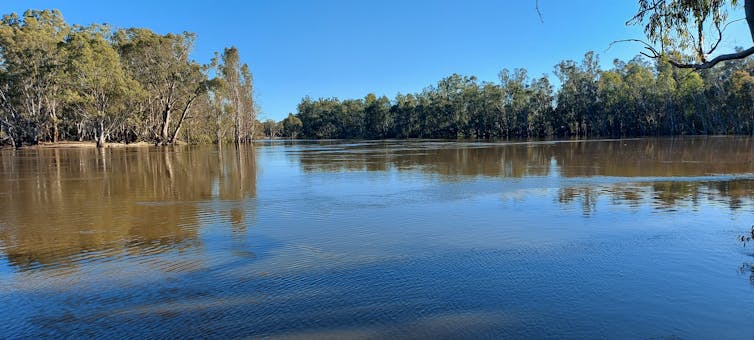
Connectivity between rivers and their floodplain is important for many reasons. It provides habitat and breeding opportunities for birds and fish, revitalises plants, and an exchange of nutrients.
Water in the Murray-Darling Basin is shared between irrigators, municipal water supply and the environment, and is largley regulated with infrastructure such as dams and weirs.
Our research is an example of the many benefits that come with ensuring we have adequate water for the environment. Our work shows that an important aspect of connection is to allow riverine predators access to high quality food resources – yabbies – in floodplain wetlands.
If yabbies are thriving and passing essential fatty acids up the food chain, populations of popular recreational fish, such as Murray cod and golden perch, will benefit accordingly.
It’s critical we improve our understanding of these complex relationships. This includes recognising other drivers of riverine population success such as competition, habitat, life history traits and spawning cues, to ensure Australia’s riverine animals can thrive. ![]()
Paul McInerney, Research Scientist, CSIRO and Gavin Rees, Principal Research Scientist, CSIRO
This article is republished from The Conversation under a Creative Commons license. Read the original article.
Thanks to heavy rain, Australia’s environment scores a 7 out of 10 – but the future remains bleak
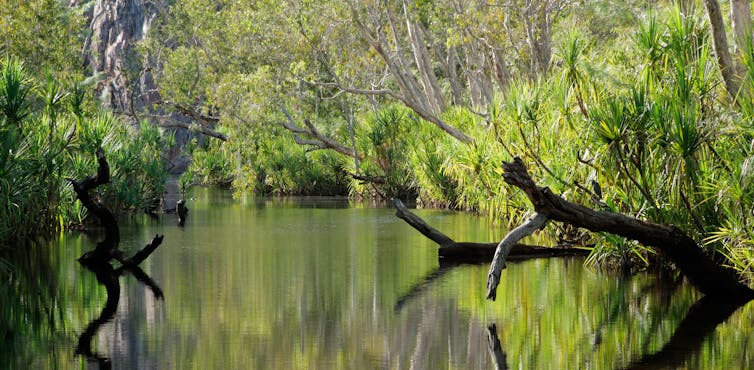
After the devastating floods, it’s hard to imagine only two years earlier many hard-hit communities suffered extreme heat, drought and unprecedented bushfires. Yet our report, released today, shows Australia’s environment has recovered dramatically since then.
Every year we use a supercomputer to analyse vast amounts of measurements from satellites and field stations to give the condition of Australia’s environment a score out of ten. For 2021, we score it 6.9 – four points higher than the year before.
The improvement is largely thanks to two years of plentiful rains that helped Australia’s forests, pastures and farmland recover well.
But as the rains only increased in 2022, inundating many parts of southeast Australia, you may well be wondering: can there be too much rain for our environment? And what might this all mean for the coming bushfire seasons?
First, Let’s Look Back At 2021
We assessed Australia’s environment using 15 key indicators, such as water availability, bushfire, population pressures and vegetation health. Combined, these help determine the overall “environmental condition score”.
On our website, you can also find regional scores for your state or territory, local government area, catchment and electorate. Unusually, scores improved almost everywhere.
We confirmed that rainfall was near or above average nearly everywhere, thanks to back-to-back La Niña events – a natural climate phenomenon over the Pacific Ocean associated with wetter weather.
What’s more, in the winter and spring of 2021, parts of Australia also felt the effects of a “negative Indian Ocean Dipole” – a little like the Indian Ocean’s version of La Niña that also brings rainier weather.
Here are a few ways all this rain benefited Australia’s environment:
it replenished parched soils that missed rainfall in 2020, and improved growing conditions in both natural and managed landscapes such as farms and plantation forests.
compared to 2020, drought conditions eased across previously drought-ravaged areas of inland northern Australia
river flows across Australia increased by 75% on 2020 figures, and urban water supplies increased for all capital cities
wetlands swelled to their greatest total extent since 2016 (although still 9% below the 20-year average), with no major algal blooms or fish kills
growth conditions in Australia’s cropping, grazing and irrigation lands were well above average and the best since 2000 in all major regions except South Australia and inland Western Australia.
Australia also experienced less population growth and carbon emissions in 2021, mainly as a result of the COVID-19 pandemic, translating to a slower increase of the pressure on our environment.
Dark Clouds On The Horizon
Unfortunately, some troubling trends did not get better in 2021. Biodiversity continued to decline. Twelve species were declared extinct, although ten of those probably went extinct more than 60 years ago. A more recent extinction was the Christmas Island pipistrelle, a tiny bat last seen in 2009.
Another 34 species were added to Australia’s list of threatened species, eight of which are birds from Kangaroo Island, which suffered extensive and severe bushfires in early 2020.
While the number of threatened species fluctuate with the condition of their habitat, their long-term decline continues unabated. This is largely driven by invasive species such as feral cats and foxes, logging, urban development, river water extraction and an increasingly hot climate.
For example, despite the good rains and increased wetland extent, researchers counted fewer birds in Eastern Australia than in the previous four years.
Favourable conditions in the Great Barrier Reef led to the rapid, but fragile, recovery of hard corals after three bleaching events in five years. However, a recent heatwave in northern Queensland means a fourth coral bleaching event is on the cards for 2022.
And of course, despite the relatively benign weather conditions in 2021, the spectre of climate change on a global level has not lifted.
World economies recovering from the pandemic saw atmospheric carbon dioxide concentration increase by 2.5 parts per million, 6% faster than in 2020 and 11% faster than the average growth rate since 2000.
Because of La Niña, more of the excess heat went into the Pacific Ocean in 2021 than normal, rather than into the atmosphere. So while the atmosphere was 0.14 degrees cooler than in 2021, it was still almost one degree above the 2000-20 average and the sixth-warmest year on record.
Can There Ever Be Too Much Rain?
Above-average rain already led to major flooding in Queensland and NSW in 2021, even before the more recent deluge. Indeed, the recent, record-breaking rains added more water to soils, catchments, rivers and dams already replenished in 2021.
Does Australia’s environment still benefit from so much rain? Mostly, it can.
Our ecosystems are generally better adapted to wild climate swings, shedding excess water efficiently and recovering quickly from damage.
In normally dry regions, more rain means more vegetation growth and uptake of carbon dioxide from the atmosphere – although much of it will be released again during droughts or fires.
River flooding is a source of life in inland Australia, which may mitigate some of the damage done by the diversion and over-extraction of floodwaters.
The consequences of extreme rainfall for invasive plants and animals are poorly understood but probably very diverse. Invasive species less adapted to drought may spread faster.
But the biggest environmental impacts are where natural vegetation was cleared for farming, housing or mining. Unprotected, bare soil soaks up less excess rainfall, and the rain and runoff can loosen up more sediment.
This erosion degrades farmland, cuts away riverbanks and the washed-out sediment and nutrients end up in rivers and the sea, where it can smother marine life and encourages outbreaks of crown-of-thorns starfish that attack coral reefs.
What Does This Mean For Bushfires?
The Bureau of Meteorology expects that La Niña conditions reached their peak and rainfall conditions may normalise soon. Some of the excess heat stored in the ocean will be released, causing air temperatures to quickly resume their warming trend.
Combined with the booming growth of vegetation, the extent of bushfires will likely pick up again next fire season: more vegetation means more fuel for fire. And it only takes a few hot and dry weeks for these conditions to increase fire activity.
Unfortunately, the pressures of vegetation destruction, invasive species and climate change will degrade our agriculture and ecosystems for decades to come. Incisive reductions in carbon emissions and more careful ecosystem management can avoid these impacts worsening.
Both are within reach, but require the sort of consensus and resolve shown in response to COVID-19 and Russia’s invasion. Our environmental crisis is no less severe.![]()
Albert Van Dijk, Professor, Water and Landscape Dynamics, Fenner School of Environment & Society, Australian National University and Shoshana Rapley, Research assistant, Australian National University
This article is republished from The Conversation under a Creative Commons license. Read the original article.
Trees: why they’re our greatest allies against floods – but also tragic victims
Gregory Moore, The University of MelbourneAs the floodwaters recede, mountains of debris are left behind – sheets of plaster, loose clothes, mattresses and, of course, trees. Some debris I’ve seen in floods includes massive tree trunks weighing 5 tonnes of more, bobbing along like corks in the rapidly flowing waters.
The trees that line our creeks, rivers and floodplains are on the front line when major flooding occurs, and bear the brunt of the flood’s mighty forces. But while they are often victims of floods, trees are also our greatest allies.
From stabilising river banks with the strong grip of their roots to changing the course of floodwater, here’s how trees influence floods – and how floods can kill them.
How Trees Influence Floods
The large and fine roots of trees, such as river red gums, bind and consolidate soil, stabilising river banks and reducing erosion. This reduces the amount of sediment entering waterways, and prevents waters down-stream becoming muddied and clogged with silt.
Large trees can also protect smaller plants such as shrubs by acting as a physical barrier, shielding other vegetation from the forceful momentum of floodwater. This is because the presence of trees slows the floodwaters’ speed, as their trunks, roots and branches block and deflect water, and change the direction of flow.
However, slowing floodwaters can also cause the flood front to widen, inundating areas further away from the usual river course. This is a major consideration when creek and river banks are being revegetated – we want to capture the benefits trees provide, but also ensure that if floodwaters slow down there’s no greater risk to property or life.
Another different but related role is that trees can prevent landslides or landslips. Indeed, landslides have occurred across flood-affected regions such as Illawarra and Kangaroo Valley in NSW, and continue to threaten people and homes.
On slopes, tree root systems consolidate soils and help prevent the movement of super saturated soil, which can flow like a liquid down hill. So it can be a problem when people remove trees from around their homes or along roads as a part of bushfire prevention programs, without thinking that cleared sites and roadside verges might be prone to landslides.
Sometimes a compromise might be a better management option. Rather than removing all trees on a slope or verge, leave some of those with large roots systems and plant trees that might slow fires or resist them. Also consider planting species that resprout after fires such as tree ferns, so their roots systems aren’t lost and the soil doesn’t erode.
Trees Are Also Flood Victims
Some trees won’t survive major floods as the water’s brute force undermines their root systems, bringing them down.
In other cases, the debris, including whole trees and large branches, acts as a battering ram on large trunks. Most big trees will survive this, but some will be repeatedly battered until the trunk, major branches or root systems fail.
These then become part of the debris that damages infrastructure, such as bridges and other trees downstream.
For most trees, floods are a fleeting event that lasts a few days or perhaps a couple of weeks. Many tree species cope well with this situation, but what happens to those that might be inundated for weeks or even months in the wake of floods?
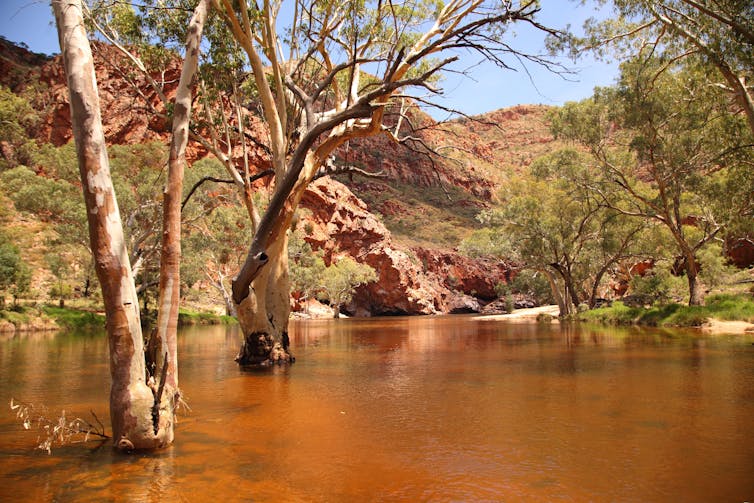
Soils can remain very wet for a long time after flooding. Some trees, such as river red gum (Eucalyptus camaldulensis) and swamp gum (Eucalyptus ovata), can tolerate inundation for many weeks. We’ve seen populations of river red gum, for example, cope with up to nine months of inundation.
Others may not do so well if they remain under water for long periods of time. This includes older and stressed trees, some fruit trees like citrus and stone fruit species, or some conifers.
Water-logged soils have low levels of oxygen, which means roots struggle to maintain their normal metabolism, health and function. This also affects the fungi associated with healthy roots. The longer low oxygen levels persist, the less suitable conditions are.
Low oxygen in soils lead to anaerobic respiration – when cells break down sugars to generate energy without oxygen, producing alcohol and lactic acid. Both alcohol and lactic acid are only mild poisons, but as their level rises, root and fungal cells can be killed.
Water-logged soils also mean roots are deprived of their usual sources of energy and die of starvation. And once the roots start to go, there’s a rapid downward spiral in the tree’s condition.
Trees can die very quickly, over a matter of days, and such rapid deaths are much more likely in older, stressed trees. Little can be done to help trees survive under these conditions.
Take Care Around Trees After Floods
When trees that survived the flood die in its aftermath, they can cause riverbanks to collapse. This creates a danger for those who approach at the wrong time.
And as roots die, the trees are less stable. This means if winds pick up speed, the compromised root system in soggy soil can lead to windthrow, which is where whole trees are blown over.
This can happen weeks or even months after a flood, so take care on these sites on windy days.
The major floods inundating NSW and Queensland are not the first – and will certainly not be the last – many of us will experience in our lifetimes.
For those of us who have been acutely aware of the prediction of major flooding events as part of climate change, these events haven’t come as a surprise. They were inevitable, just as fiercer bushfires and ferocious storms are inevitable.
In this land of extremes, trees have always been part of floods and flood prone ecosystems. Yet trees are disappearing at an alarming rate along many waterways.
While climate change poses new threats to trees, it also creates new opportunities for us to work with trees as allies in dealing with climate change and its consequences. We must not work against them. ![]()
Gregory Moore, Doctor of Botany, The University of Melbourne
This article is republished from The Conversation under a Creative Commons license. Read the original article.
Today’s disappointing federal court decision undoes 20 years of climate litigation progress in Australia
Jacqueline Peel, The University of Melbourne and Rebekkah Markey-Towler, The University of MelbourneThe federal court today unanimously decided Federal Environment Minister Sussan Ley does not have a duty of care to protect young people from the harms of climate change.
The ruling overturns a previous landmark win by eight high school students, who sought to stop Ley approving a coal mine expansion in New South Wales. While the judge did not prevent the mine expansion, he agreed the minister did indeed have a duty of care to children in the face of the climate crisis.
Ley’s successful appeal is disappointing. As legal scholars, we believe the judgment sets back the cause of climate litigation in Australia by two decades, at a time when we urgently need climate action to accelerate.
So why was Ley successful? The federal court’s 282-page judgment offers myriad reasons for why no duty should be imposed on the minister. But what emerges most clearly is the court’s view that it’s not their place to set policies on climate change. Instead, they say, it’s the job of our elected representatives in the federal government.
What Did The Judges Say?
In the original class action case filed in 2020, a single federal court judge decided Ley owed Australian children a common law duty of care when considering and approving the coal mine extension, under Australia’s Environment Protection and Biodiversity Conservation (EPBC) Act.
This required the minister to take reasonable care when exercising her powers to avoid causing Australian children under 18 personal injury or death from carbon dioxide emissions.
Ley appealed this decision in July last year. She also approved the coal mine extension, arguing her decision wouldn’t contribute to global warming because even if the mine was refused, other sources would step in to meet the coal demand.
And today, in a live-streamed proceeding, the full bench of the federal court ruled in her favour: the stated duty should not be imposed on the minister. While the outcome was unanimous, the three judges had separate reasoning.
One judge saw climate change as a matter for government, not the courts, to address, saying the duty would be an issue “involving questions of policy (scientific, economic, social, industrial and political) […] unsuitable for the Judicial branch to resolve”.
Another said there was insufficient “closeness” and “directness” between the minister’s power to approve the coal mine and the effect this would have on the children. But he left open the possibility of a future claim if any of the children in the class action suffered damage.
The third judge had three main reasons. First, the EPBC Act doesn’t create a duty-of-care relationship between the minister and children. Second, establishing a standard of care isn’t feasible as it would result in “incoherence” between the duty and the minister’s functions. Third, it’s not currently foreseeable that approving the coal mine extension would cause the children personal injury, as the law is understood.
The Good News: Climate Science Remains Undisputed
In the original case, the judge made landmark rulings about the dangers of climate change, marking a significant moment in Australian climate litigation.
He found one million of today’s Australian children are expected to be hospitalised due to heat stress, they’ll experience substantial economic loss, and when they grow up the Great Barrier Reef and most eucalypt forests won’t exist.
According to the judge, this harm was “reasonably foreseeable”. This is important from a legal point of view, as courts have previously considered climate change to be speculative, and a future problem.
As part of her appeal, Sussan Ley argued that these findings, based on presented evidence, were incorrect and went beyond what was submitted to the court. Today, these arguments were unanimously rejected.
The federal court found all the minister’s criticisms on the evidence of climate change were unfounded and all of the primary judge’s findings were appropriate to be made. As Chief Justice Allsop concluded:
[B]y and large, the nature of the risks and the dangers from global warming, including the possible catastrophe that may engulf the world and humanity was not in dispute.
But while this reaffirms acceptance that climate science is unequivocal, it does nothing to prevent mounting climate change harms, most recently made clear by the devastating floods across NSW and Queensland.
Indeed, it only turns this responsibility back to the current federal government, which has policies increasingly at odds with what the science and concerned citizens say is needed.
Bucking The Trend
This was a test case in Australian law, as it explored a novel legal argument. Its failure will likely put a dampener on innovative climate litigation in Australia.
Today’s judgment asserts that the courts are limited in what they can do to address climate change. It goes against the trend of successful climate change court rulings overseas, and the widespread mobilisation across community groups, business and local governments for action.
Just last year, for example, we saw a court in The Hague order oil and gas giant Shell to reduce carbon dioxide emissions by 45% by 2030, relative to 2019 levels, and a German court ruling that the government’s climate goals were not strong enough.
Today’s federal court finding that dealing with coal mine emissions is for governments alone seemingly reimposes barriers to climate litigation in Australia, carefully dismantled by the previous two decades of climate change cases.
We’ve seen a number of landmark climate cases in Australia. This includes the Rocky Hill verdict where a judge rejected a new coal mine on climate grounds, and the Bushfire Survivors case where the court found the NSW government had a legal obligation to take meaningful action on climate change.
These brought the glimmer of hope that where the federal government fails to act, the courts will step in. Today’s ruling suggests this is no longer the case.
In the lead up to the Australian federal election, the appeal outcome emphasises the importance of changing government policy if we’re going to get better outcomes on climate change in this country. Climate change certainly will not wait – the fight for a safe climate future continues.![]()
Jacqueline Peel, Director, Melbourne Climate Futures, The University of Melbourne and Rebekkah Markey-Towler, Research fellow, Melbourne Climate Futures, The University of Melbourne
This article is republished from The Conversation under a Creative Commons license. Read the original article.
After the floods, the distressing but necessary case for managed retreat
Antonia Settle, The University of MelbourneFrom Brisbane to Sydney, many thousands of Australians have been reliving a devastating experience they hoped – in 2021, 2020, 2017, 2015, 2013, 2012 or 2010/11 – would never happen to them again.
For some suburbs built on the flood plains of the Nepean River in western Sydney, for example, these floods are their third in two years.
Flooding is a part of life in parts of Australia. But as climate change intensifies the frequency and severity of floods, fires and other disasters, and recovery costs soar, two big questions arise.
As a society, should we be setting up individuals and families for ruin by allowing them to build back in areas where they can’t afford insurance? And is it fair for taxpayers to carry the huge burden of paying for future rescue and relief costs?
Considering ‘Managed Retreat’
Doing something about escalating disaster risks require multiple responses. One is making insurance as cheap as possible. Another is investing in mitigation infrastructure, such as flood levees. Yet another is about making buildings more disaster-resistant.
The most controversial response is the policy of “managed retreat” – abandoning buildings in high-risk areas.
In Australia this policy has been mostly discussed as something to consider some time in the future, and mostly for coastal communities, for homes that can’t be saved from rising sea levels and storm surges.
It’s a sensitive subject because it uproots families, potentially hollows outs communities and also affects house prices – an unsettling prospect when economic security is tied to home ownership.
But managed retreat may also be better than the chaotic consequences of letting the market alone try to work out the risks to individuals and communities.
Grand Forks: A Case Study
The strategy is already being implemented in parts of western Europe and North America. An example from Canada is the town of Grand Forks, a community of about 4,000 people 300 kilometres east of Vancouver.
The town is located where two rivers meet. In May 2018 it experienced its worst flooding in seven decades, after days of extreme rain attributed to higher than normal winter snowfall melting quickly in hotter spring temperatures. Deforestation has been blamed for exacerbating the flood.
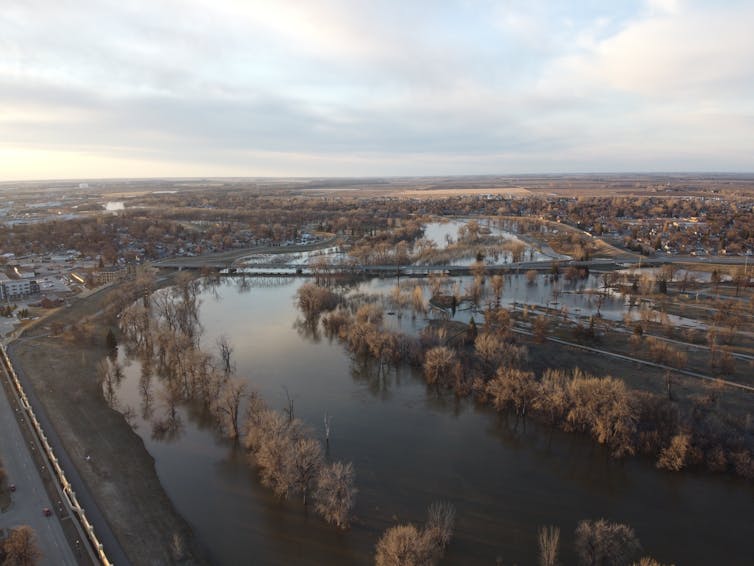
The flood damaged about 500 buildings in Grand Forks, with lowest-income neighbourhoods in low-lying areas the worst-affected.
In the aftermath the local council received C$53 million from the federal and provincial governments for flood mitigation. This included work to reinforce river banks and build dikes. About a quarter of the money was allocated to acquire about 80 homes in the most flood-prone areas.
The decision to demolish these homes – about 5% of the town’s housing – and return the area to flood plain has been contentious.
Some residents simply didn’t want to sell. Adding to the pain was owners being paid the post-flood market value of their homes (saving the council about C$6 million). There were also long delays, with residents stuck in limbo for more than year while authorities finalised transactions.
A Sensitive Subject
Grand Forks shares similarities to Lismore, the epicentre of the disaster affecting northern NSW and southern Queensland.
Lismore is also built on a flood plain where two rivers meet. Floods are a regular occurrence, with the last major disaster being in 2017. Insuring properties in town’s most flood-prone areas was already unaffordable for some. In the future it may be impossible.

Last week NSW premier Dominic Perrottet said about 2,000 of the town’s 19,000 homes would need to be demolished and rebuilt, a statement the local council general manager downplayed, saying in the majority of cases “people will not have to worry”.
For a community traumatised by loss, overwhelmed by the recovery effort and angry at the perceived tardiness of government relief efforts, discussing any form of managed retreat is naturally emotionally charged.
But there’s never an ideal time to talk about bulldozing homes and relocating households.
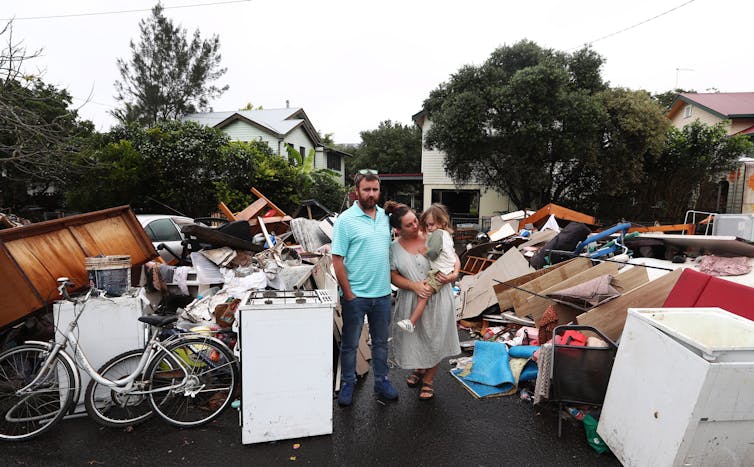
Uprooting Communities
Managed retreat has far-reaching financial ramifications. As in Grand Forks, the first questions are what homes are targeted, who pays, and how much.
Some residents may be grateful to sell up and move to safe ground. Others may not, disputing the valuation offered or being reluctant to leave at any price.
Managed retreat policies also affect many more than just those whose homes are being acquired. Demolishing a block or suburb can push down values in neighbouring areas, due to fears these homes may be next. Those households are also customers for local businesses. Their loss can potentially send a town economy into decline.
No wonder many people want no mention of managed retreat in their communities.
Pricing In Climate Change
Markets, however, are already starting to “price in” rising climate risks.
Insurance premiums are going up. The value of homes in high-risk areas will drop as buyers look elsewhere, particularly in the wake of increasingly frequent disasters.
The economic fallout, both for individual households and local communities, could be disastrous.
The Reserve Bank of Australia warned in September 2021 that climate-related disasters could rapidly drive house prices down, particularly in areas that have previously experienced rapid house price growth.
These disasters are also amplifying inequality, with poorer households more likely to live in high-risk locations and also to be uninsured.
In Lismore, for example, more than 80% of households flooded in 2017 were in the lowest 20% of incomes. These trends will intensify as growing climate risks translate into higher insurance premiums and lower house prices.
A deliberate strategy of managed retreat, though distressing and difficult, can help to minimise the upheaval in housing markets as climate risks become increasingly apparent.
We can do better than leaving the most socially and economically vulnerable households to live in high-risk areas, while those with enough money can move away to better, safer futures. Managed retreat can play a key role.![]()
Antonia Settle, Academic (McKenzie Postdoctoral Research Fellow), The University of Melbourne
This article is republished from The Conversation under a Creative Commons license. Read the original article.
Permafrost Peatlands Approaching Tipping Point
March 14, 2022
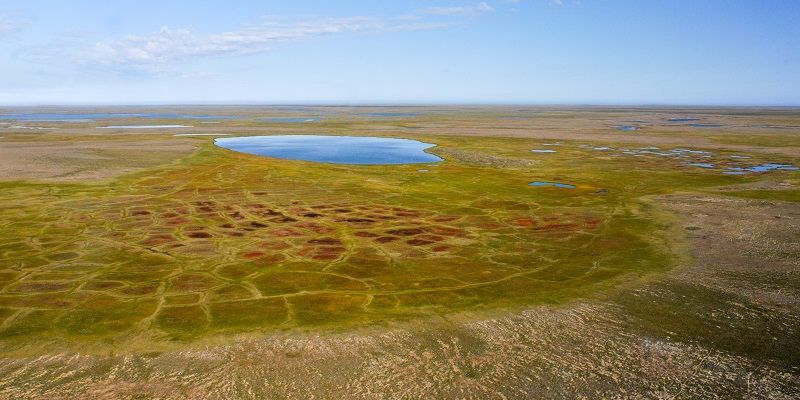 Researchers warn that permafrost peatlands in Europe and Western Siberia are much closer to a climatic tipping point than previous believed. The frozen peatlands in these areas store up to 39 billion tons of carbon -- the equivalent to twice that stored in the whole of European forests.
Researchers warn that permafrost peatlands in Europe and Western Siberia are much closer to a climatic tipping point than previous believed. The frozen peatlands in these areas store up to 39 billion tons of carbon -- the equivalent to twice that stored in the whole of European forests.
A new study, led by the University of Leeds, used the latest generation of climate models to examine possible future climates of these regions and the likely impact on their permafrost peatlands.
The projections indicate that even with the strongest efforts to reduce global carbon emissions, and therefore limit global warming, by 2040 the climates of Northern Europe will no longer be cold and dry enough to sustain peat permafrost.
However, strong action to reduce emissions could help preserve suitable climates for permafrost peatlands in northern parts of Western Siberia, a landscape containing 13.9 billion tonnes of peat carbon.
The study, published in Nature Climate Change, emphasises the importance of socio-economic policies aimed at reducing emissions and mitigating climate change and their role in determining the rate and extent of permafrost peatland thaw.
Study lead author, Richard Fewster is a PhD researcher in the School of Geography at Leeds. He said: "We examined a range of future emission trajectories. This included strong climate-change mitigation scenario, which would see large-scale efforts to curb emissions across sectors, to no-mitigations scenarios and worse-case scenarios.
"Our modelling shows that these fragile ecosystems are on a precipice and even moderate mitigation leads to the widespread loss of suitable climates for peat permafrost by the end of the century.
"But that doesn't mean we should throw in the towel. The rate and extent to which suitable climate are lost could be limited, and even partially reversed, by strong climate-change mitigation policies."
Study co-author Dr Paul Morris, Associate Professor of Biogeoscience at Leeds, Said: "Huge stocks of peat carbon have been protected for millennia by frozen conditions but once those conditions become unsuitable all that stored carbon can be lost very quickly.
"The magnitude of twenty-first century climate change is likely to overwhelm any protection the insulating properties of peat soils could provide."
The large quantities of carbon stored in peatland permafrost soils are particularly threatened by rapid twenty-first-century climate change. When permafrost thaws the organic matter starts to decompose, releasing greenhouse gases such as carbon dioxide and methane, which increase global temperatures and potentially accelerate global climate change.
Study co-author Dr Ruza Ivanovic, Associate Professor in Climatology at Leeds said: "Peatland permafrost responds differently to changing climates than mineral-soil permafrost due to the insulating properties of organic soils, but peatlands remain poorly represented in Earth system models.
"It is vitally important these ecosystems are understood and accounted for when considering the impact of climate change on the planet."
Study co-author Dr Chris Smith, from the School of Earth and Environment, said: "More work is needed to further understanding of these fragile ecosystems.
"Remote sensing and field campaigns can help improve maps of modern peat permafrost distribution in regions where observation data is lacking. This would enable future modelling studies to make hemispheric-scale projections."
Fewster, R.E., Morris, P.J., Ivanovic, R.F. et al. Imminent loss of climate space for permafrost peatlands in Europe and Western Siberia. Nat. Clim. Chang., 2022 DOI: 10.1038/s41558-022-01296-7
Restoring Tropical Peatlands Supports Bird Diversity And Does Not Affect Livelihoods Of Oil Palm Farmers
March 15, 2022
A new study has found that oil palm can be farmed more sustainably on peatlands by re-wetting the land -- conserving both biodiversity and livelihoods.
The research looked at tropical peatland restoration efforts in Indonesia, and investigates whether managing water levels on drained peatlands affects the viability of oil palm grown by farmers, as well as bird species diversity.
Tropical peatlands in Southeast Asia contain large below-ground carbon stocks, while peat swamp forests contain unique and threatened biodiversity. However, when peat forests are cleared and peatlands are drained for cultivation, it results in carbon emissions, biodiversity losses, and land subsidence. Drained peatlands are also prone to fire, which in the past has led to toxic haze, deaths, and health and economic damage.
Indonesia is estimated to contain 47% of global tropical peatlands, chiefly on the islands of Borneo and Sumatra. Forests covered 76% of Sumatra's peatland in 1990, but by 2015, 66% was covered by smallholder agriculture or industrial plantations, primarily of oil palm.
Drainage is considered necessary to maintain oil palm yields because prolonged flooding reduces fruit production. However, peatland drainage means Sumatra is now a hotspot for peat fires.
The study found that re-wetting should have net positive effects for smallholders by reducing the risk of fires that can damage property, plantations, and human health, without having a detectable effect on oil palm yields.
A farmer collaborating on the project, Mr Udin, said: "Even if the farm flooded for a few days, the yield is not decreased."
The study, published in Journal of Applied Ecology, was led by the University of York and ZSL (Zoological Society of London), as well as colleagues from the Indonesian Center for Agricultural Land Resources Research and Development and Jambi University in Indonesia.
The study -- which focussed on Jambi province in Sumatra, Indonesia -- studied water table depths on oil palm farms managed by smallholder farmers, to assess impacts on oil palm yields and on bird species living on the farms.
Peat is a carbon-rich soil formed from partly decomposed vegetation in permanently wet conditions. Tropical peatlands are critically important for storing carbon in the ground, and also provide habitats for tropical wildlife, including tigers, gibbons, birds, and specially adapted plants, fish, and microbes.
Cultivating peatlands also supports people's livelihoods, such as small-scale farmers growing oil palm.
Peatland needs to be drained using canals to make the land suitable for farming, which can impact habitats and cause the peat to emit carbon. The dry land can also become prone to fire -- leading to increased carbon emissions, toxic haze, and a threat to the lives of both people and wildlife.
Restoring drained peatland involves a process of "rewetting" where canals draining water away are blocked or filled in, which makes it less likely that the peatlands will catch fire.
Ninety bird species were recorded in an area of peat swamp forest neighbouring the farms, but only 48 species were found in oil palm. The species living in the forest were also different, including 35 conservation-priority species, and tended to be larger-bodied species that play different ecological roles, meaning forest protection is critical for conserving biodiversity.
Reducing fire risk in the neighbouring oil palm farms by re-wetting should reduce the risk of forest burning and of further habitat loss for wildlife, while still supporting farmer production.
Dr. Eleanor Warren-Thomas, now at Bangor University and IIASA, and who led the study while a researcher at York, said: "Indonesia has been very successful in reducing deforestation and considerable effort has gone into peat restoration to avoid fires.
"But one of the big challenges is the trade-off between livelihoods of owners of small farms and ensuring biodiversity in these areas.
"What this new study shows is that retaining more water in oil palm farms to reduce fire risk seems to have no effect on yields, which is good news for farmers. In contrast to the concerns of some plantations, retaining water levels close to the surface (40cm or less) still enables oil palm cultivation."
Eleanor said: "By also surveying bird species in one of the remaining peat swamp forest areas nearby, we also showed the huge importance of protecting the remaining forest for bird conservation -- avoiding fires in the landscape is key to doing this.
"These unique birds can also act as seed dispersers -- crucial if in the longer-term forest restoration becomes an option.
"One of the conclusions of the study is that larger-scale industrial farming organisations would be able to help further studies in this area, if they are able to publish their data and share their knowledge to inform sustainable oil palm production strategies."
Eleanor Warren‐Thomas, Fahmuddin Agus, Panji Gusti Akbar, Merry Crowson, Keith C. Hamer, Bambang Hariyadi, Jenny A. Hodgson, Winda D. Kartika, Mailys Lopes, Jennifer M. Lucey, Dedy Mustaqim, Nathalie Pettorelli, Asmadi Saad, Widia Sari, Gita Sukma, Lindsay C. Stringer, Caroline Ward, Jane K. Hill. No evidence for trade‐offs between bird diversity, yield and water table depth on oil palm smallholdings: Implications for tropical peatland landscape restoration. Journal of Applied Ecology, 2022; DOI: 10.1111/1365-2664.14135
Twenty-First Century Hydroclimate: A Continually Changing Baseline, With More Frequent Extremes
March 14, 2022
Maps of the American West have featured ever darker shades of red over the past two decades. The colours illustrate the unprecedented drought blighting the region. In some areas, conditions have blown past severe and extreme drought into exceptional drought. But rather than add more superlatives to our descriptions, one group of scientists believes it's time to reconsider the very definition of drought.
Researchers from half a dozen universities investigated what the future might hold in terms of rainfall and soil moisture, two measurements of drought. The team, led by UC Santa Barbara's Samantha Stevenson, found that many regions of the world will enter permanent dry or wet conditions in the coming decades, under modern definitions. The findings, published in the Proceedings of the National Academy of Sciences, reveal the importance of rethinking how we classify these events as well as how we respond to them.
"Essentially, we need to stop thinking about returning to normal as a thing that is possible," said Stevenson, an assistant professor in the Bren School of Environmental Science & Management. This idea affects both how we define drought and pluvial (abnormally wet) events and how we adapt to a changing environment.
A drought is when conditions are drier than expected. But this concept becomes vague when the baseline itself is in flux. Stevenson suggests that, for some applications, it's more productive to frame drought relative to this changing background state, rather than a region's historical range of water availability.
To predict future precipitation and soil moisture levels, Stevenson and her colleagues turned to a new collection of climate models from different research institutions. Researchers had run each model many times with slightly different initial conditions, in what scientists call an "ensemble." Since the climate is an inherently chaotic system, researchers use ensembles to account for some of this unpredictability.
The results show a world where certain regions are in permanent drought while others experience perennial pluvial for the rest of the 21st century. The team calculated the year in which average soil moisture will exceed the threshold that defines either a megadrought or a megapluvial. "In other words, at what point do average conditions exceed what we would consider a megadrought if it happened now, [and never return to 'normal']" Stevenson said.
The western United States has already crossed this benchmark, and there are other places headed that way as well, including Australia, southern Africa and western Europe. "But, again, that's if we use today's definition of a drought," Stevenson said.
The authors argue that we need to move away from fixed definitions toward a more nuanced account of drought and pluvial. "Our idea of normal is, in a sense, meaningless when 'normal' is continuously changing," Stevenson added.
Climate models indicate that average soil moisture in many regions will continue to drop. That said, the team's ensembles suggests that soil moisture will continue to experience drought-related variation similar to today, relative to the ever-drier baseline.
The fluctuation highlights the need to consider both long term changes and the usual ups and downs associated with historic droughts and pluvials. "The most important management challenge will be to adjust for the relentless declines in water availability, as this exceeds the expected impact of future megadroughts," said co-author Julia Cole, a professor at the University of Michigan.
Precipitation patterns, on the other hand, will become much more extreme. Warm air holds more moisture than cold air. So as the atmosphere heats up, it'll be able to suck more moisture from dry areas and dump more precipitation on wet regions.
"We wanted to consider both precipitation and soil moisture at the same time because that can be important for water management," Stevenson said. For instance, we will need to adapt infrastructure to more arid conditions in the American West, but that infrastructure will also need to handle more intense rainfall.
"When we talk about being in a drought, the presumption is that eventually the drought will end, and conditions will return to normal," Stevenson said. "But if we're never returning to normal, then we need to adapt all of the ways that we manage water with the expectation that normal will continually be drier and drier every year."
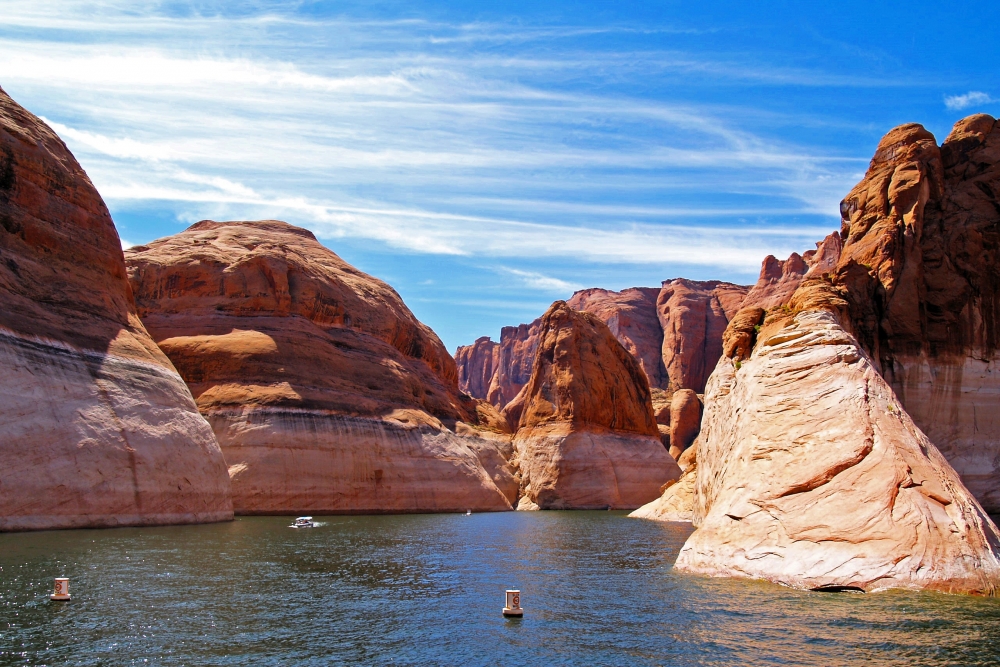
Rings around Lake Powell in 2017 evince the drought that has settled on the American West. Stevenson’s study suggests it will remain with us for the rest of the century, if not longer.
Samantha Stevenson, Sloan Coats, Danielle Touma, Julia Cole, Flavio Lehner, John Fasullo, Bette Otto-Bliesner. Twenty-first century hydroclimate: A continually changing baseline, with more frequent extremes. Proceedings of the National Academy of Sciences, 2022; 119 (12) DOI: 10.1073/pnas.2108124119
Research Shows Huge Forest Fires Don't Cause Living Trees To Release Much Carbon
March 14, 2022
Research on the ground following two large wildfires in California's Sierra Nevada mountain range showed the vast majority of carbon stored in trees before the blazes was still there after the fires.
Published in the journal Forests, the findings are an important step toward understanding the connection between wildfires and climate-change-inducing carbon emissions, according to a scientific collaboration that included Mark Harmon of Oregon State University.
Carbon dioxide, a product of combustion, is a major greenhouse gas and one of the primary causes of climate change.
Knowing how much carbon is released during fires can help inform decisions about the carbon storage and emissions implications of forest management decisions, say the scientists.
While satellite- and LiDAR-based research has suggested as much as 85% of living trees' biomass combusts in California's big fires, the study led by Harmon, professor emeritus in the OSU College of Forestry, indicates the amount of combusted biomass is less than 2%.
"The general impression the public has is that much of a forest is combusted in a megafire, and that's usually what's been presented in the press," Harmon said. "But that did not match what we were observing, so we did a very detailed study examining the combustion process at different levels of the fire system, starting with twigs and ending up at the level of the entire fire."
Harmon, fire ecologist Chad Hanson of the John Muir Project and Dominick DellaSala, chief scientist with the Wild Heritage Project, looked at the Creek Fire, which affected nearly 400,000 acres beginning in September 2020, and the Rim Fire, which started in August 2013 and spread across more than 250,000 acres.
The scientists spent four years on the ground in the fire areas, studying and calculating combustion rates at the level of branches, trees, stands of trees and landscapes to determine the amount of carbon that remained in trees versus what was released into the atmosphere.
"The estimates of the percentage of trees combusted in large fires are all over the place -- they are often high -- and this has been a major concern in the recent literature, suggesting that better estimates are needed," Harmon said. "Our work delivers one such estimate, one that provides a framework to synthesize combustion rates at different levels of the forest and different levels of fire severity."
The study showed that while combustion rates were 100% for the smaller branch segments of big trees and up to 57% for whole small trees, the combustion rates were low overall at the stand level (0.1% to 3.2%) and the landscape level (0.6% to 1.8%).
Stand level refers to all trees of various species and sizes in an area of a particular fire severity class; landscape level means the entire burned area, averaging over the fire severity classes.
"While many field scientists likely would not find our results surprising, there were recent peer-reviewed published estimates of up to 85% live tree combustion from the Rim Fire," Harmon said. "Other studies based on a literature review suggest up to 65% of the live trees could have been combusted in high-severity patches. No one in the peer-review process questioned the results."
Even in severe fire patches the larger-size trees showed low combustion rates -- less than 5%, Harmon said. Large trees account for the majority of a forest's biomass, leading to the low overall combustion rates at the stand level, he explained.
"Even for megafires classified as high severity, much of the area within the fire perimeter burned at low and moderate severity with less than 0.5% live tree combustion at the stand level," Hanson added. "This study demonstrates the value of ground-based studies to inform policy decisions and management. Removing vegetation over vast areas is likely to lead to more cumulative carbon emissions than large fires themselves."
Scientists are increasingly emphasizing the importance of storing more carbon in mature, older trees whether forests have burned or not, DellaSala said, as a way to curb total greenhouse gas emissions.
"We suggest that researchers and policy makers avoid using combustion rates not based on field study as they appear to overstate the wildfire emissions used in carbon emissions reporting; this can potentially misdirect climate mitigation policy," he said.
Dead trees decompose slowly as new vegetation grows and absorbs atmospheric carbon, the scientists point out. If fire-killed trees are allowed to remain in place, the natural decomposition process might take decades to hundreds of years to release the trees' carbon.
On the other hand, if those trees are logged to serve as energy-producing biomass, that same carbon could potentially enter the atmosphere much faster. More study is needed, the researchers note, to determine the degree to which post-fire forest management influences the carbon release time frame, including how biomass energy might offset the burning of fossil fuels and how wood products release carbon as they are used and disposed.
"The effects of salvaging and putting some of that wood into durable wood products need to be fully investigated," Harmon said. "More fires need to be examined using our type of approach to determine how variable the combustion rates are at different levels for different forest types and ages."
About the OSU College of Forestry: For a century, the College of Forestry has been a world class center of teaching, learning and research. It offers graduate and undergraduate degree programs in sustaining ecosystems, managing forests and manufacturing wood products; conducts basic and applied research on the nature and use of forests; and operates more than 15,000 acres of college forests.
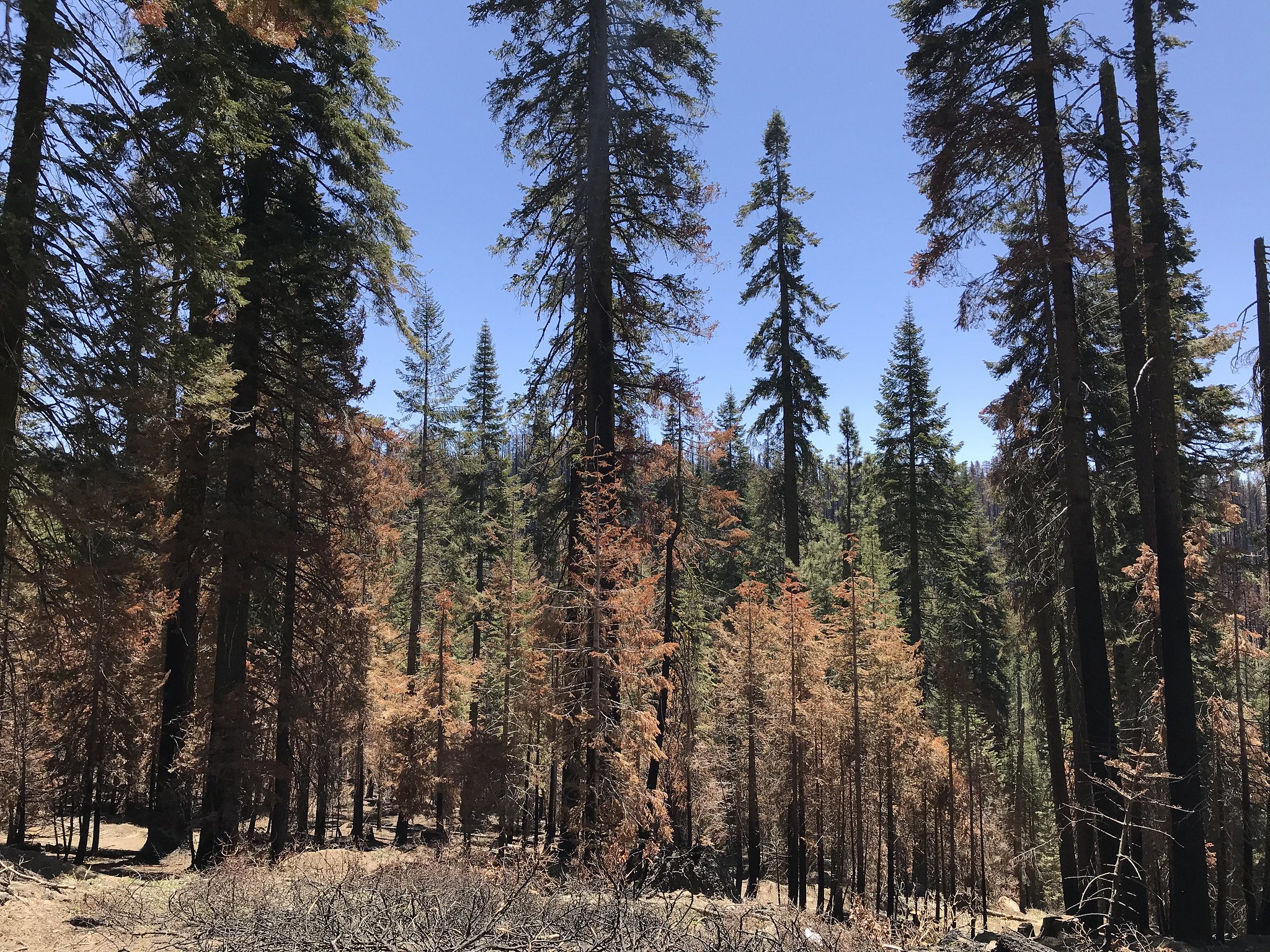
Creek Fire Aftermath
Mark E. Harmon, Chad T. Hanson, Dominick A. DellaSala. Combustion of Aboveground Wood from Live Trees in Megafires, CA, USA. Forests, 2022; 13 (3): 391 DOI: 10.3390/f13030391
Red dirt, yellow sun, green steel: how Australia could benefit from a global shift to emissions-free steel
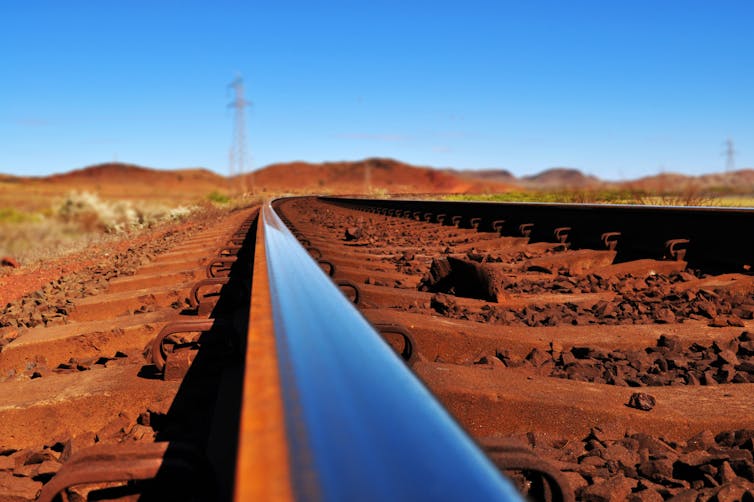
Australia is the world’s number one exporter of both iron ore and metallurgical coal, the key ingredients of traditional steel making. Together, these materials make up a very large part of Australia’s export income.
But as the world moves towards net-zero emissions by 2050, the conventional way of making steel, using coal to power a blast furnace, will come under question.
Iron and steel production, in total, account for close to 7% of the world’s greenhouse gas emissions. This is incompatible with a net-zero world economy, where residual emissions would need to be compensated through carbon dioxide uptake from the atmosphere. The mature technology of coal-fired blast furnaces currently dominates the steel industry, generating 90% of its emissions.
For years, decarbonising steel production has been seen as particularly challenging. But now, alternatives to the centuries-old practice of using coal to produce iron and steel are emerging. Researchers have been working on a number of new pathways to make steel with little or no emissions. The most promising process relying on the use of hydrogen.
Our new research shows the steel industry can develop and implement green steel production processes to contribute to the great decarbonisation effort needed. For Australia, this presents an enormous new opportunity to future-proof and expand our steel industry as the world acts on climate change.
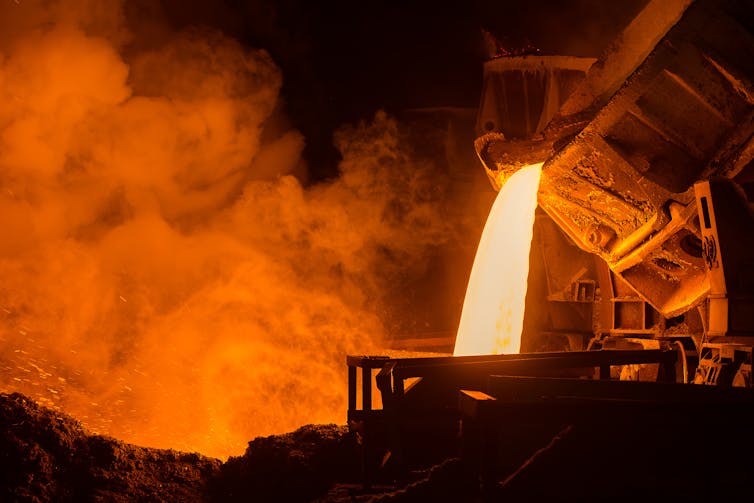
How Can We Produce Green Steel?
To eliminate emissions from this sector, several things are needed. First, we must use steel efficiently in well-designed structures. Second, we must recover and recycle steel after use. Thirdly, we must find the best and most scalable processes to reduce and eventually eliminate the emissions produced when making new steel.
In Australia, there have been several recent efforts to improve steel production processes. Rio Tinto developed the HIsarna technology, which can cut emissions by up to 80% – as long as the carbon is captured and stored. Other emission reduction technologies have also been developed here, such as dry slag granulation, polymer injection technology and charcoal-based reduction. However these technologies cannot scale up to decarbonise all steel produced globally.
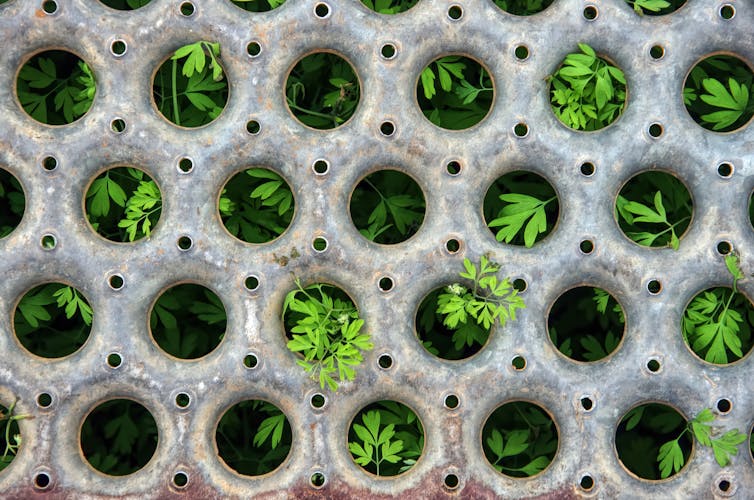
Are there other options? Yes. We’re beginning to see real world trials of advanced green steel technologies which can make emissions-free steel.
These techniques rely on hydrogen to strip oxygen molecules from iron ore to produce metallic iron. Frontrunners include hydrogen shaft furnaces like HYBRIT and fluidised-bed systems such as HYFOR. Both of these processes are undergoing testing in Europe.
We could even see the direct electrolysis of steel, using electric currents to strip off the oxygen, and avoid the need for hydrogen.
How Quickly Do We Need Green Steel?
Australia has recently pledged a 2050 net-zero target. Over the last two years, many of Australia’s major trading partners also made ambitious emission reduction pledges, including major iron ore buyers China, Japan and South Korea.
So how can the steel industry help? We examine five different decarbonisation scenarios in our recent paper. We found the only scenario compatible with keeping global warming to under 2℃ includes the aggressive development and adoption of green steel technologies.
This would mean ending the use of blast furnaces by 2060, maximising recycling of steel, as well as some transitional use of gas in direct-reduced iron making. Under this zero-carbon scenario, green steel technologies would take over by 2060.

In creating our scenarios, we relied only on existing technologies, rather than promising but still unproven technologies such as direct air capture and storage of carbon dioxide.
Here’s How Australia Could Benefit
Australia need not lose from the transition away from metallurgical coal.
More than 95% of all our iron ore comes from Western Australia’s Pilbara region, which also happens to have excellent solar resources. Our modelling suggests we could produce electricity from solar panels almost a third cheaper than some overseas industrial hubs.
So Australia could be well positioned to become a green steel producer, adding significant value to our exports.
The Pilbara could become a region where iron ore is mined, smelted into iron and possibly into steel without producing carbon dioxide, and shipped overseas. We could export intermediate products, such as pellets or hot-briquetted iron, or perhaps even finished steel.
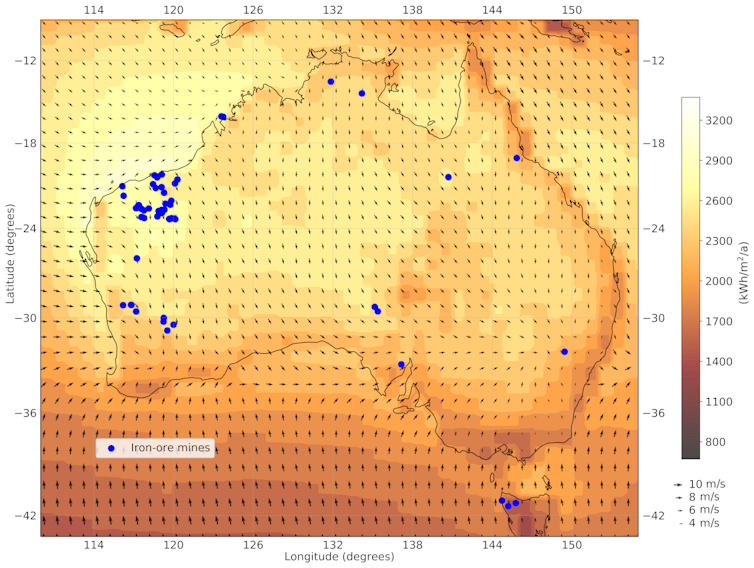
Even if no green steel industrial operations develop in Australia, we will come up against a world shifting away from metallurgical coal.
Not only that, but we’ll have to make sure future green steel technologies can use Australian ores, or we risk losing market share. That’s because other major exporters have iron ores with different purity and chemistry, and it’s not clear yet how green steel processes will drive demand for different ores. It looks likely that low emissions steel will require high grade ore, but this is still an evolving area of research.
Change is coming, like it or not. We need good policies in place now to ensure Australia can keep its major role in the global iron and steel supply chain.
We’ll need local research and development, international partnerships with leading technology producing and steel-consuming nations and government backing for the major investments required to establish a green iron or steel industry in Australia.
The world is changing rapidly. If we want to grasp the major opportunity presented by green steel, we must act now to explore the benefits of having iron ore mines, solar resources and ports close to each other.![]()
John Pye, Associate Professor, School of Engineering, ANU, Australian National University; Alireza Rahbari, Research fellow, School of Engineering, ANU, Australian National University; Emma Aisbett, Fellow, Australian National University; Frank Jotzo, Professor, Crawford School of Public Policy and Head of Energy, Institute for Climate Energy and Disaster Solutions, Australian National University, and Zsuzsanna Csereklyei, Senior Lecturer in Economics, RMIT University
This article is republished from The Conversation under a Creative Commons license. Read the original article.
Avalon Golf Course Bushcare Needs You
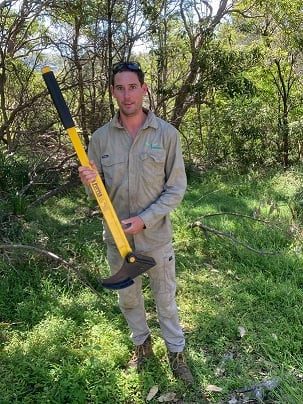
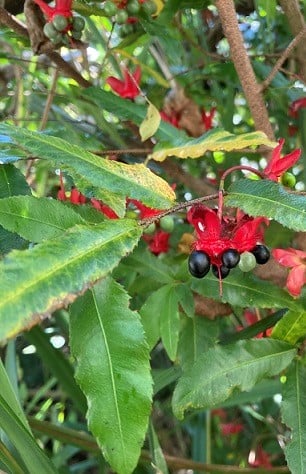
Pittwater Reserves: Histories + Notes + Others
A History Of The Campaign For Preservation Of The Warriewood Escarpment by David Palmer OAM and Angus Gordon OAM
Angophora Reserve - Angophora Reserve Flowers
Annie Wyatt Reserve - A Pictorial
Avalon's Village Green: Avalon Park Becomes Dunbar Park - Some History + Toongari Reserve and Catalpa Reserve
Bairne Walking Track Ku-Ring-Gai Chase NP by Kevin Murray
Bangalley Headland Bangalley Mid Winter
Banksias of Pittwater
Barrenjoey Boathouse In Governor Phillip Park Part Of Our Community For 75 Years: Photos From The Collection Of Russell Walton, Son Of Victor Walton
Barrenjoey Headland: Spring flowers
Barrenjoey Headland after fire
Bayview Baths
Bayview Wetlands
Beeby Park
Bilgola Beach
Botham's Beach
Bungan Beach Bush Care
Careel Bay Saltmarsh plants
Careel Bay Birds
Careel Bay Clean Up day
Careel Bay Playing Fields History and Current
Careel Creek
Careel Creek - If you rebuild it they will come
Centre trail in Ku-ring-gai Chase National Park
Chiltern Track- Ingleside by Marita Macrae
Clareville Beach
Clareville/Long Beach Reserve + some History
Coastal Stability Series: Cabbage Tree Bay To Barrenjoey To Observation Point by John Illingsworth, Pittwater Pathways, and Dr. Peter Mitchell OAM
Cowan Track by Kevin Murray
Curl Curl To Freshwater Walk: October 2021 by Kevin Murray and Joe Mills
Currawong and Palm Beach Views - Winter 2018
Currawong-Mackerel-The Basin A Stroll In Early November 2021 - photos by Selena Griffith
Currawong State Park Currawong Beach + Currawong Creek
Deep Creek To Warriewood Walk photos by Joe Mills
Drone Gives A New View On Coastal Stability; Bungan: Bungan Headland To Newport Beach + Bilgola: North Newport Beach To Avalon + Bangalley: Avalon Headland To Palm Beach
Dunbar Park - Some History + Toongari Reserve and Catalpa Reserve
Dundundra Falls Reserve: August 2020 photos by Selena Griffith - Listed in 1935
Elsie Track, Scotland Island
Elvina Track in Late Winter 2019 by Penny Gleen
Elvina Bay Walking Track: Spring 2020 photos by Joe Mills
Elvina Bay-Lovett Bay Loop Spring 2020 by Kevin Murray and Joe Mills
Fern Creek - Ingleside Escarpment To Warriewood Walk + Some History photos by Joe Mills
Iluka Park, Woorak Park, Pittwater Park, Sand Point Reserve, Snapperman Beach Reserve - Palm Beach: Some History
Ingleside
Ingleside Wildflowers August 2013
Irrawong - Ingleside Escarpment Trail Walk Spring 2020 photos by Joe Mills
Irrawong - Mullet Creek Restoration
Katandra Bushland Sanctuary - Ingleside
Lucinda Park, Palm Beach: Some History + 2022 Pictures
McCarrs Creek
McCarr's Creek to Church Point to Bayview Waterfront Path
McKay Reserve
Mona Vale Beach - A Stroll Along, Spring 2021 by Kevin Murray
Mona Vale Headland, Basin and Beach Restoration
Mount Murray Anderson Walking Track by Kevin Murray and Joe Mills
Mullet Creek
Narrabeen Creek
Narrabeen Lagoon Catchment: Past Notes Present Photos by Margaret Woods
Narrabeen Lagoon State Park
Narrabeen Lagoon State Park Expansion
Narrabeen Rockshelf Aquatic Reserve
Nerang Track, Terrey Hills by Bea Pierce
Newport Bushlink - the Crown of the Hill Linked Reserves
Newport Community Garden - Woolcott Reserve
Newport to Bilgola Bushlink 'From The Crown To The Sea' Paths: Founded In 1956 - A Tip and Quarry Becomes Green Space For People and Wildlife
Pittwater spring: waterbirds return to Wetlands
Pittwater's Lone Rangers - 120 Years of Ku-Ring-Gai Chase and the Men of Flowers Inspired by Eccleston Du Faur
Pittwater's Parallel Estuary - The Cowan 'Creek
Riddle Reserve, Bayview
Salvation Loop Trail, Ku-Ring-Gai Chase National Park- Spring 2020 - by Selena Griffith
Stapleton Reserve
Stapleton Park Reserve In Spring 2020: An Urban Ark Of Plants Found Nowhere Else
The Chiltern Track
The Resolute Beach Loop Track At West Head In Ku-Ring-Gai Chase National Park by Kevin Murray
Towlers Bay Walking Track by Joe Mills
Trafalgar Square, Newport: A 'Commons' Park Dedicated By Private Landholders - The Green Heart Of This Community
Turimetta Beach Reserve by Joe Mills, Bea Pierce and Lesley
Turimetta Beach Reserve: Old & New Images (by Kevin Murray) + Some History
Turimetta Headland
Warriewood Wetlands and Irrawong Reserve
Whale Beach Ocean Reserve: 'The Strand' - Some History On Another Great Protected Pittwater Reserve
Winji Jimmi - Water Maze
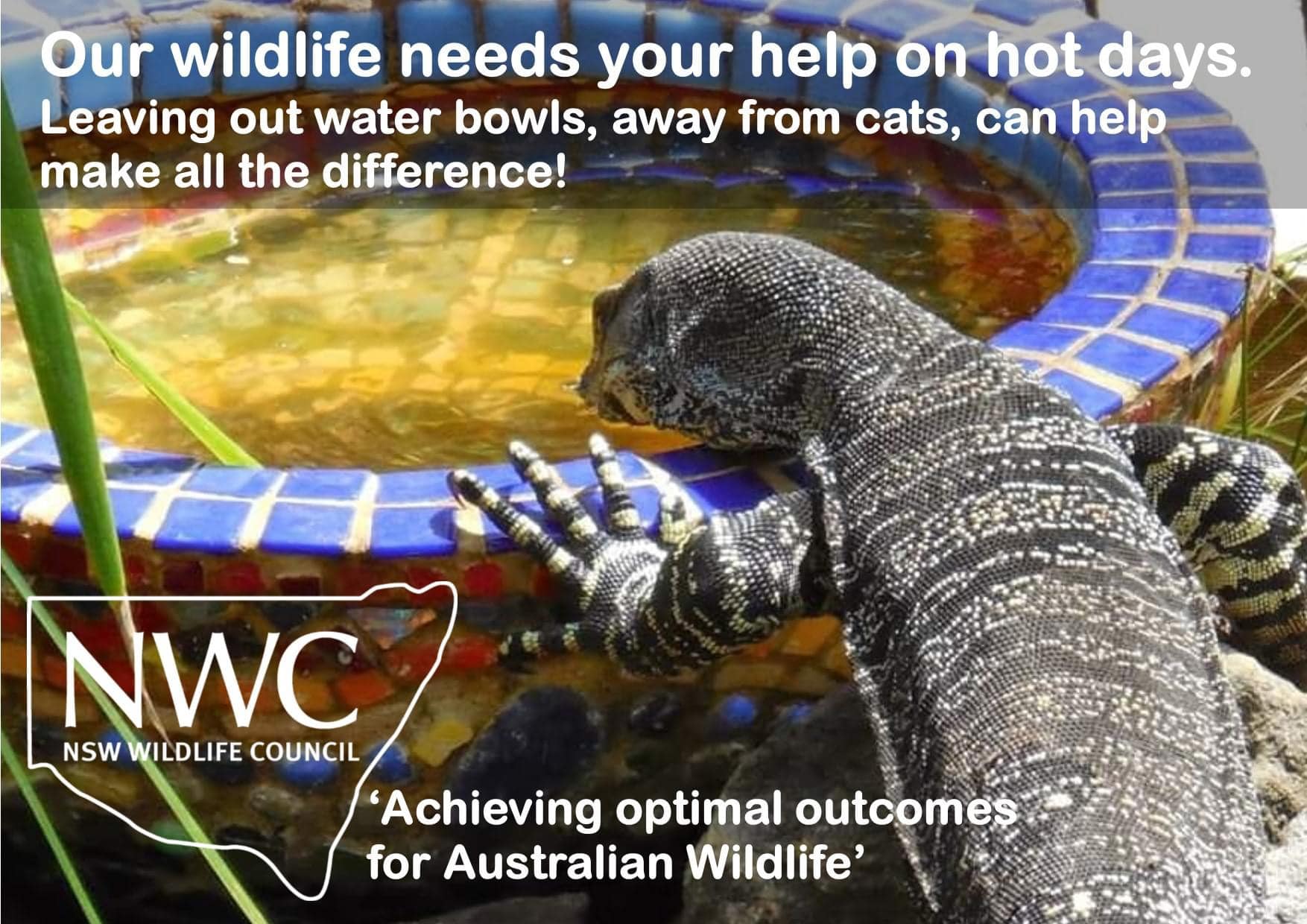
New Shorebirds WingThing For Youngsters Available To Download
A Shorebirds WingThing educational brochure for kids (A5) helps children learn about shorebirds, their life and journey. The 2021 revised brochure version was published in February 2021 and is available now. You can download a file copy here.
If you would like a free print copy of this brochure, please send a self-addressed envelope with A$1.10 postage (or larger if you would like it unfolded) affixed to: BirdLife Australia, Shorebird WingThing Request, 2-05Shorebird WingThing/60 Leicester St, Carlton VIC 3053.
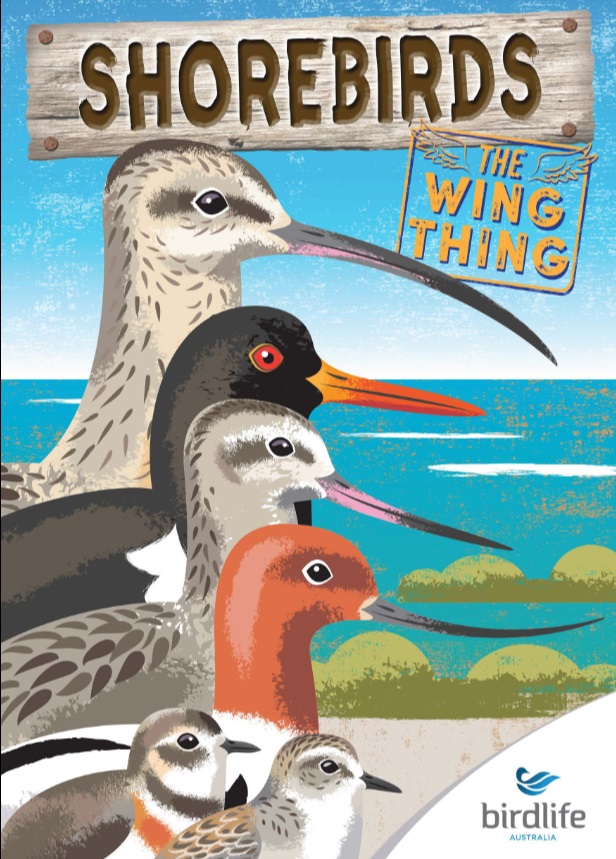
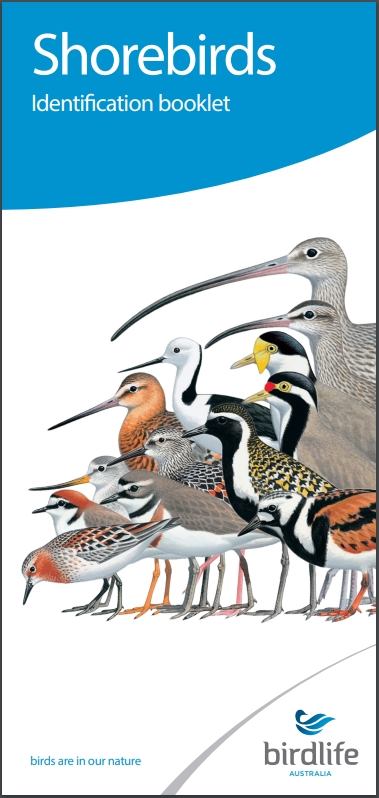 Shorebird Identification Booklet
Shorebird Identification Booklet
The Migratory Shorebird Program has just released the third edition of its hugely popular Shorebird Identification Booklet. The team has thoroughly revised and updated this pocket-sized companion for all shorebird counters and interested birders, with lots of useful information on our most common shorebirds, key identification features, sighting distribution maps and short articles on some of BirdLife’s shorebird activities.
The booklet can be downloaded here in PDF file format: http://www.birdlife.org.au/documents/Shorebird_ID_Booklet_V3.pdf
Paper copies can be ordered as well, see http://www.birdlife.org.au/projects/shorebirds-2020/counter-resources for details.
Download BirdLife Australia's children’s education kit to help them learn more about our wading birdlife
Shorebirds are a group of wading birds that can be found feeding on swamps, tidal mudflats, estuaries, beaches and open country. For many people, shorebirds are just those brown birds feeding a long way out on the mud but they are actually a remarkably diverse collection of birds including stilts, sandpipers, snipe, curlews, godwits, plovers and oystercatchers. Each species is superbly adapted to suit its preferred habitat. The Red-necked Stint is as small as a sparrow, with relatively short legs and bill that it pecks food from the surface of the mud with, whereas the Eastern Curlew is over two feet long with a exceptionally long legs and a massively curved beak that it thrusts deep down into the mud to pull out crabs, worms and other creatures hidden below the surface.
Some shorebirds are fairly drab in plumage, especially when they are visiting Australia in their non-breeding season, but when they migrate to their Arctic nesting grounds, they develop a vibrant flush of bright colours to attract a mate. We have 37 types of shorebirds that annually migrate to Australia on some of the most lengthy and arduous journeys in the animal kingdom, but there are also 18 shorebirds that call Australia home all year round.
What all our shorebirds have in common—be they large or small, seasoned traveller or homebody, brightly coloured or in muted tones—is that each species needs adequate safe areas where they can successfully feed and breed.
The National Shorebird Monitoring Program is managed and supported by BirdLife Australia.
This project is supported by Glenelg Hopkins Catchment Management Authority and Hunter Local Land Services through funding from the Australian Government’s National Landcare Program. Funding from Helen Macpherson Smith Trust and Port Phillip Bay Fund is acknowledged.
The National Shorebird Monitoring Program is made possible with the help of over 1,600 volunteers working in coastal and inland habitats all over Australia.
The National Shorebird Monitoring program (started as the Shorebirds 2020 project initiated to re-invigorate monitoring around Australia) is raising awareness of how incredible shorebirds are, and actively engaging the community to participate in gathering information needed to conserve shorebirds.
In the short term, the destruction of tidal ecosystems will need to be stopped, and our program is designed to strengthen the case for protecting these important habitats.
In the long term, there will be a need to mitigate against the likely effects of climate change on a species that travels across the entire range of latitudes where impacts are likely.
The identification and protection of critical areas for shorebirds will need to continue in order to guard against the potential threats associated with habitats in close proximity to nearly half the human population.
Here in Australia, the place where these birds grow up and spend most of their lives, continued monitoring is necessary to inform the best management practice to maintain shorebird populations.
BirdLife Australia believe that we can help secure a brighter future for these remarkable birds by educating stakeholders, gathering information on how and why shorebird populations are changing, and working to grow the community of people who care about shorebirds.
To find out more visit: http://www.birdlife.org.au/projects/shorebirds-2020/shorebirds-2020-program
Aussie Bread Tags Collection Points

Award-Winning Journalist Kate McClymont AM Addresses CWA Manly’s IWD Event
Pension Increase March 20
- Singles: Increase of $20.10 a fortnight, totalling $987.60 a fortnight
- Couples (combined): Increase of $30.20 a fortnight for couples, totalling $1,488.80 a fortnight.
- Single: threshold has increased by $6,750 to $599,750 for homeowners and $816,250 for non-homeowners.
- Couple (combined): threshold has increased by $10,000 to $901,500 for homeowners and $1,118,000 for non-homeowners.
NSW Seniors Festival Online
Future Of Aged Care In The Spotlight
Reforms To Deliver Lower Prices For Medical Devices And Lower Private Health Insurance Premiums
Netflix Good-Self-Checkouts Bad: Seniors Grapple With Changing Digital Technology
Young People Urge To Stop Vaping

Rebecca Jeffcoat: Mawson Station Leader
Published March 6, 2022 by The Australian Antarctic Division
This year's Station Leader for Mawson research station is Rebecca Jeffcoat. Ms Jeffcoat returns to Antarctica after previously leading the wintering team at Casey research station in 2017.
Word Of The Week: Tenacity
- United Cinemas Avalon - Wednesday 30th March, 8 pm
- Collaroy United Cinemas -Thursday 7th April, 7 pm

Young And Emerging Artists Showcase Talents At MAG&M
Ocean Film Festival World Tour 2022

Military History Lesson On Offer For Students
Chain Of Fools - Aretha Franklin
- Aretha Franklin - lead vocals and piano
- Jimmy Johnson and Joe South - guitars
- Spooner Oldham - Wurlitzer electric piano
- Tommy Cogbill - bass
- Roger Hawkins - drums
- The Sweet Inspirations, Carolyn Franklin, Erma Franklin & Ellie Greenwich - background vocals
Is there such a thing as the perfect alarm tone? We think so (and this is what it might sound like)

With the return to office work – and no longer being able to roll out of bed and straight into a Zoom meeting – many of us will be waking up earlier to beat the morning rush. So it’s important to ensure we’re on top of our alarm game.
But what type of alarm provides peak alertness upon waking? Pythagoras posited this same question in around 500 BCE. He believed specific songs – melodies that roused the energies – had the ability to counteract the drowsiness waking may bring.

And he appears to have had a point. Research has now shown certain alarm sounds can indeed enhance our alertness upon waking.
In particular, alarms that have the qualities of “tunefulness” (think ABC by The Jackson 5) have melodies that energise the listener, and are great for effective waking.
But to understand why this is the case, we first need to understand how our brains respond to complex stimuli when moving out of the sleep state.
Waking Up Right Is Important
Waking up groggy never feels right. And how we wake up can not only affect our mood and the day’s outlook, but also our cognition and mental performance.
In some instances, grogginess after waking has the potential to be dangerous several hours later, by reducing our performance in critical decision-making (such as in health settings, emergency responses, security or while driving).
This cognitive state of reduced alertness is referred to as “sleep inertia”. It’s a growing concern as it can have serious consequences while performing high-risk tasks, including driving.
How Does The Brain Wake Up?
Transitioning from sleep to alertness does not follow an on/off switch-like system, as brain imaging techniques have revealed.
Waking relies on complex biological processes, including increased blood flow allocation to the brain. Studies show the brain regions important for alert performance (the prefrontal cortical regions) take longer to “start-up” than other areas (such as the basal ganglia) which are important for arousal. This means you can be awake, but not quite with it.
Research has also shown blood flow activity within the brain to be diminished after waking, in comparison to the pre-sleep state. Thus, alert wakefulness may in part require mechanisms that encourage a redistribution of blood flow to the brain – something certain types of sound and music can do.

Another factor that influences alertness upon waking is the stage of sleep at the time. You’re less likely to feel groggy if you wake up from a light sleep, compared to a deeper slow-wave or REM sleep.
A light sleep stage is characterised by Theta wave frequencies (as measured from the brain’s electrical activity) and can be associated with feeling drowsy. In this sleep stage, arousal from external stimuli such as an alarm can quickly draw a person out of sleep.
Conversely, deep sleep or slow-wave sleep consists of Delta wave frequencies, which are associated with unconsciousness. This is the more challenging sleep stage to fully wake up from.
Alarm effectiveness also depends on age. Young adults aged 18 to 25 need louder alarms than older people, and preteens need an even greater threshold than young adults. You may require an alarm as much as 20 decibels louder at 18 than you would at 80.

Is Sound Frequency And Tune Important?
But when it comes to choosing an alarm, what exactly is the best choice? A growing body of evidence suggests different alarm sounds can positively influence human performance after waking.
Our systematic review published in 2020 showed temporal frequencies (the pitch of the sound as measured in Hertz) around 500 Hz are better at arousing young children than 2000+ Hz varieties.
We lack research to say whether this also applies to adults, but it’s assumed the same alarm types would be beneficial.
Voice notifications such as a person yelling “wake up!” work better than higher frequencies. However, they are not as effective as 500 Hz tonal beeping alarms – similar to those preinstalled in most mobile phones.
Our research also explores how qualities of music, and specifically melody, play a role in encouraging alert wakefulness. We found that the way in which people interpret their alarms “tunefulness” also reflects how groggy they feel after waking.
Here, people who use alarms that carry a tune they will readily hum along to will experience less grogginess than those with a standard “beeping” alarm.
With this in mind, we developed a custom rhythmic melody that led to significantly better performance upon and after waking, when compared to standard beeping alarms.
Other studies have also found popular music (which can be interpreted as being melodic) is good to counteract sleep inertia after a short nap, and even more yet if it is music the listener personally enjoys.
What Can I Do To Improve My Waking Alarm?
What does all this mean for the day-to-day? Well, given all of the above, we believe the perfect alarm must sound something like this:
- it has a a melody you can easily sing or hum along to
- it has a dominant frequency around 500 Hz, or in the key of C5 and
- it is not too fast or too slow (100 – 120 beats per minute is ideal).
Also remember the alarm must be louder for younger people (or for particularly deep sleepers).
If we consider the default alarms available on our devices, much more work is needed – especially since research in this area is relatively new. Hence, we suspect the availability of custom alarm downloads will increase with time.
Most pre-loaded alarms at the appropriate loudness will wake you, but specific designs (such as the one above) have been modelled on the latest research to not only encourage arousal, but also provide increased alertness. ![]()
Stuart McFarlane, Researcher, Auditory Perception and Cognition, RMIT University and Adrian Dyer, Associate Professor, RMIT University
This article is republished from The Conversation under a Creative Commons license. Read the original article.
Ladies to the front: the hidden history of women in Australian airforce bands

Military bands, with their shiny instruments, formal uniforms and precision marching are one of the most instantly recognisable symbols of a nation’s defence forces. As such, throughout much of history, their membership as been limited to men: Australian defence force bands only formally welcomed women into their ranks after the introduction of the Sex Discrimination act in 1984.
Despite this, during World War II, a groundbreaking group of women serving in the Women’s Auxiliary Australian Air Force (WAAAF) performed alongside their male Royal Australian Air Force (RAAF) counterparts to form some of the earliest documented mixed-gender defence force bands in the world.
At the beginning of World War II women were only allowed to serve in the defence force as nurses. As the war progressed, women’s auxiliary services were formed by the army, navy and air force to fill non-combat positions left vacant by men serving overseas.
I first became aware of the existence of WAAAF performers in supposedly all-male RAAF bands while I was conducting research on the history of Australia’s defence force bands. I was contacted by Olive Jardine (née McNeil), who had joined the WAAAF during World War II and who had played with her local RAAF band during that time.
I was so sure that these bandsmen had, indeed, all been bandsmen that I almost dismissed her, politely informing Olive the parameters of my study meant I couldn’t include women’s auxiliary bands.
But Olive was resolute.
She assured me that although she had served with the WAAAF, she had been invited to join her base’s RAAF band due to a shortage of male musicians during the war.
I was soon to discover she was just one of many such women: up to a quarter of RAAF bands had at least one female member during World War II.
Volunteer-Led Bands
World War II saw a rapid increase in the number of all-female bands and orchestras, and in Australia the army, navy and air force all formed women-only auxiliary bands. While women-only bands were becoming a more familiar sight, mixed-gender military bands were much rarer.

In the USA, a couple of bands featured visiting women – but RAAF bands are the only defence force bands known to regularly feature men and women playing together at this time.
Australia’s army and navy were well established by World War II, and so had more ingrained traditions, including professional bands. But as a newer division of the defence force, only formed in 1921, RAAF bands were still volunteer bands made up of any interested members serving on base.
In the army and navy, musicians served together as a unit and the different regulations for members of women’s auxiliary forces made it impossible for them to join these bands.
However RAAF bands worked more like the many volunteer sports clubs on bases, with little (if any) oversight from air force hierarchy, opening the door for members of the WAAAF to join.
Ladies To The Front
Olive’s story is typical of the young women joining these bands.
Keen to help with the war effort, she signed up to the WAAAF as an accounts clerk and was stationed at Uranquinty in New South Wales. An experienced piano teacher, she volunteered to play organ at church services where she was approached by members of the base band who were looking for new musicians. They offered to teach her to play tenor horn, and she became the band’s only female member.
It wasn’t always a case of the odd-woman out. The Mallala band in South Australia had as many as six female members at any one time.

Other women even held leadership positions in their bands. In Perth, Hannah Colley, whose father was a bandsmen in World War I, was given the prestigious role of playing the bugle calls at Perth’s 1944 Armistice Day ceremony, a role usually given to the most skilled bugler in the band.
She would go on to post-war career playing in concert parties as a musician in the Army’s Entertainment Unit.
Meanwhile, Mary Palmer stood in as acting Drum Major in her band in Ascot Vale, Victoria, after learning to swing a mace by practising with a broom.

The Loss – And Return – Of Women
The pioneering women serving in RAAF bands during World War II performed proudly, and even held leadership positions alongside men.
After the war, the RAAF introduced its first professional band service. Entry was now restricted to men who had auditioned and who were employed by the air force solely for their musical skills. The WAAAF was discontinued in 1947 and reformed as the Womens Royal Australian Air Force (WRAAF) in 1950, however, women were not eligible to join the band corps until the introduction of the Sex Discrimination Act some 40 years later.
Perhaps one of the most refreshing aspects of these stories is the way these ground-breaking women were supported by their communities. Olive’s male bandmates taught her to play tenor horn, local newspapers proudly reported on the performances of their local WAAAF members and Hannah chose to follow in her father’s footsteps to become a defence force musician.
The musicians of the WAAAF proved to the Australian public that women could work as equals alongside men, both on the parade ground and on stage, paving the way for the generations who came after them.![]()
Anthea Skinner, Postdoctoral research associate, The University of Melbourne
This article is republished from The Conversation under a Creative Commons license. Read the original article.
‘May you always taste the sweetest fruit’: uncovering the history and hidden delights of your neighbourhood
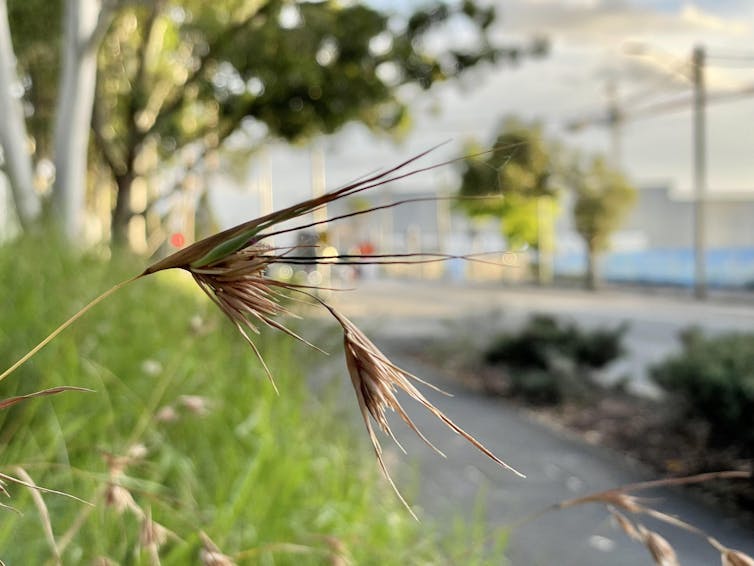
Sydney’s Green Square is one of Australia’s biggest urban renewal projects. But it’s much more than a construction site. First Nations people know it by another name: nadunga gurad, or sand dune Country.
For millenia, the area has been known for its nattai bamalmarray: freshwater wetlands and seasonal ponds. This Country has always been an important refuge along the Songline routes that connect War'ran (Sydney Cove) to Gamay (Botany Bay).
To existing residents, Green Square is home. It’s also a place to walk, visit parks, shop, and talk to neighbours, shopkeepers and tradies.
But it can be hard to see the “green” in Green Square. It’s a disrupted place punctuated by huge pits in the ground, roadworks, scaffoldings, barriers and cranes.
We’ve been working on connecting residents, workers and visitors to the local environment. We hope our project becomes a template to help anyone engage more deeply with their neighbourhood.
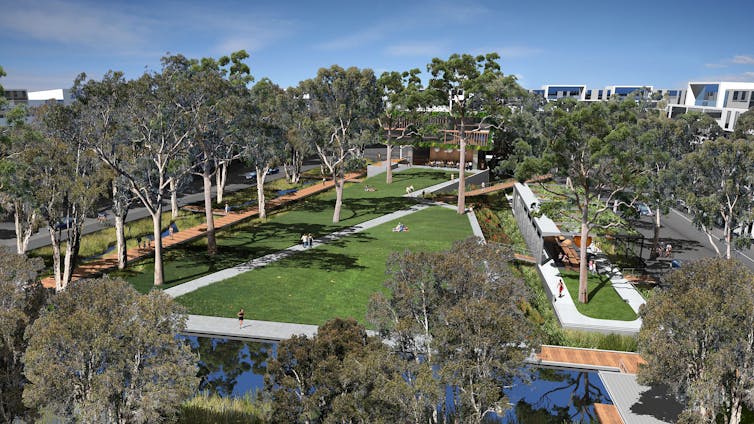
An Atlas For Change
Green Square spans the inner east Sydney suburbs of Zetland, Beaconsfield, Rosebery, Alexandria and Waterloo. In 2020, the site was home to 34,000 people and this number is growing rapidly.
During lockdowns last year, we and the charity 107 Projects sought to connect residents, workers and visitors to nature and people in their suburb. It involved workshops, walks and a map for self-guided tours. We also collected stories in a book, just released. It includes stories about:
public art and verge gardeners
Australia’s leading food rescue organisation.
Atlases have historically been, and continue to be, tools of colonisation – cataloguing and archiving the status quo.
But done right, they can also help us understand places in new ways. In Australia, this includes recognising we are always on Indigenous Country.
In that vein, our atlas includes an important contribution by Shannon Foster, a registered Sydney Traditional Owner and local D’harawal eora Knowledge Keeper.
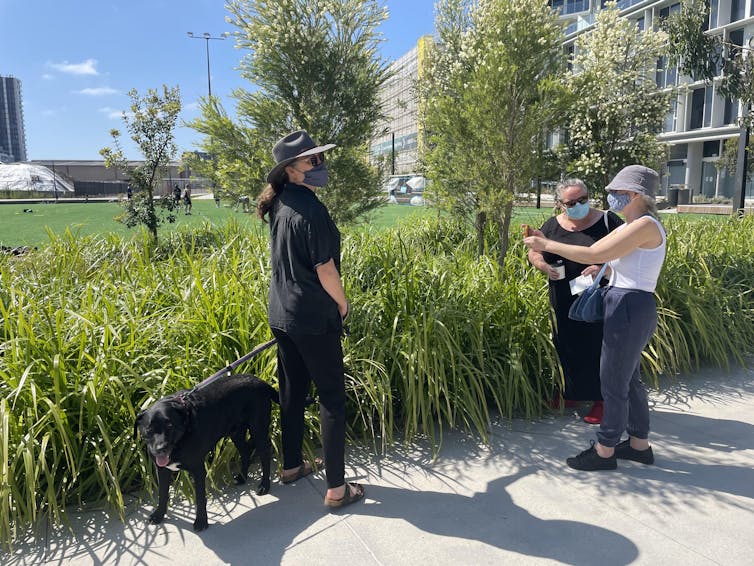
Ngeeyinee Dingan Duruwan Bata
Foster tells how, amid dense urban development at Green Square, unique plants from ancient ecosystems still emerge from undeveloped gullies.
These include paperbark trees, casuarina groves, clumps of kangaroo grass and lomandra, and regenerated areas of Eastern Suburbs Banksia Scrub.
As Foster says in this edited extract:
One of my earliest memories of learning culture from my D’harawal eora father was about understanding plants and what you could and couldn’t eat. I was always amazed to realise that you could actually live off the gardens and earth around you.
Today, one of my favourite edible plants is bamuru (kangaroo grass), not just because you can make a delicious, gluten-free, light and tasty bread from it, but because it represents the un-forgetting of knowledges and stories that have been silenced and, sometimes, erased from our lives.
There are places across Sydney Country, especially on abandoned and neglected land, that bamuru and other edible crops like bundago (native daisy yam) flourish again. These plants begin to grow in vast fields, echoing their ancient, agricultural past and the careful management of Country by local custodians like my D’harawal eora family.
The awakening of these remnant crops is a reminder that Country is its own archive, holding seeds and stories as evidence that we do indeed exist and that we have long and complex relationships with Country that can never be erased.
Now, as I walk the streets of Green Square, I look for signs of old Country breaking through the centuries of colonial development.
I dream of this place as it was, sand dunes and wetlands, galumban gurad (sacred Country), and I marvel at the fragile seedlings who, against all odds, break through the oppressive concrete and pavers to stand tall, once again, with Country.
I also honour the same spirit in my elders and ancestors who have raised me to understand that it doesn’t matter how much concrete is laid down, Country is still here and is still nurturing and sheltering us, just as it always has been and always will be.
– Ngeeyinee dingan duruwan bata (May you always taste the sweetest fruit).
Always Was, Always Will Be
Foster reminds us no matter how much we build on Country, it has always been – and remains – vital to life and culture for local custodians.
More broadly, the atlas aims to show we can improve city life and the urban environment – just by how we interact with one another, and treat the plants, animals and insects around us.
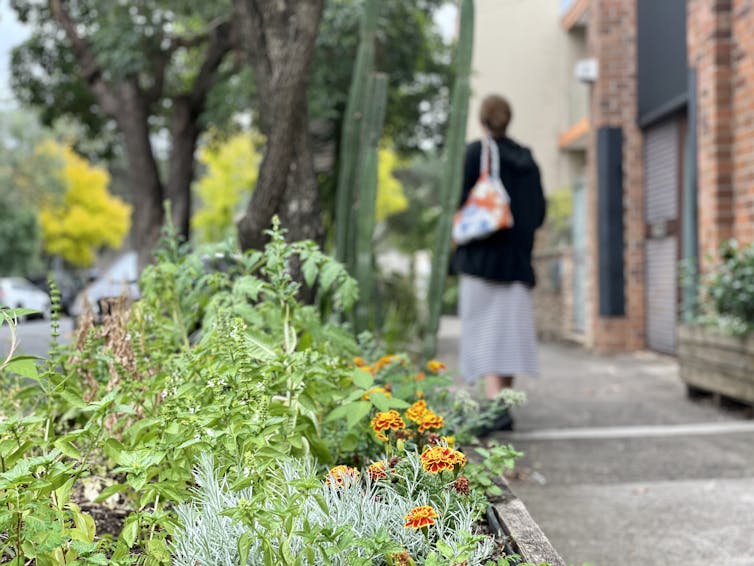
If this idea appeals to you, download a free copy of the atlas and try these activities to help you “tune in” to your local area:
find out whose Country are you on
save and exchange seeds from native plants and heirloom food varieties
get to know your local plant species, especially the endangered ones
make and maintain a verge garden
start or join a community garden
forage for wild foods, such as edible weeds
conserve water
create habitat for urban wildlife
spend time at nearby natural places such as ponds and parks
cut waste, to reduce pressure on city services and the planet
look for trees providing shelter on hot days.
These small, slow actions help create connections to nature and place, and opportunities to meet and share with people in your community. These connections are vital to overcoming the downsides of urban renewal.
And as we remake urban places, we must remember: our neighbourhood always was, and always will be, unceded Aboriginal land.![]()
Shannon Foster, D'harawal Knowledge Keeper PhD Candidate and Lecturer UTS, University of Technology Sydney; Alexandra Crosby, Associate Professor, School of Design, University of Technology Sydney, and Ilaria Vanni, Associate Professor, International Studies and Global Societies, University of Technology Sydney
This article is republished from The Conversation under a Creative Commons license. Read the original article.
Wearing shoes in the house is just plain gross. The verdict from scientists who study indoor contaminants

You probably clean your shoes if you step in something muddy or disgusting (please pick up after your dog!). But when you get home, do you always de-shoe at the door?
Plenty of Australians don’t. For many, what you drag in on the bottom of your shoes is the last thing on the mind as one gets home.
We are environmental chemists who have spent a decade examining the indoor environment and the contaminants people are exposed to in their own homes. Although our examination of the indoor environment, via our DustSafe program, is far from complete, on the question of whether to shoe or de-shoe in the home, the science leans toward the latter.
It is best to leave your filth outside the door.

What Contaminants Are In Your Home, And How Did They Get There?
People spend up to 90% of their time indoors, so the question of whether or not to wear shoes in the house is not a trivial one.
The policy focus is typically on the outdoor environment for soil, air quality and environmental public health risks. However, there is growing regulatory interest in the question of indoor air quality.
The matter building up inside your home includes not just dust and dirt from people and pets shedding hair and skin.
About a third of it is from outside, either blown in or tramped in on those offensive shoe bottoms.
Some of the microorganisms present on shoes and floors are drug-resistant pathogens, including hospital-associated infectious agents (germs) that are very difficult to treat.
Add in cancer-causing toxins from asphalt road residue and endocrine-disrupting lawn chemicals, and you might view the filth on your shoes in a new light.

A Roll-Call Of Indoor Nasties
Our work has involved the measurement and assessment of exposure to a range of harmful substances found inside homes including:
antibiotic-resistant genes (genes that make bacteria resistant to antibiotics)
the perfluorinated chemicals (also known as PFAS or “forever chemicals” because of their tendency to remain in the body and not break down) used ubiquitously in a multitude of industrial, domestic and food packaging products
A strong focus of our work has involved assessing levels of potentially toxic metals (such as arsenic, cadmium and lead) inside homes across 35 nations (including Australia).
These contaminants – and most importantly the dangerous neurotoxin lead – are odourless and colourless. So there is no way of knowing whether the dangers of lead exposure are only in your soils or your water pipes, or if they are also on your living room floor.
The science suggests a very strong connection between the lead inside your home and that in your yard soil.
The most likely reason for this connection is dirt blown in from your yard or trodden in on your shoes, and on the furry paws of your adorable pets.
This connection speaks to the priority of making sure matter from your outdoor environment stays exactly there (we have tips here).
A recent Wall Street Journal article argued shoes in the home aren’t so bad. The author made the point that E. coli – dangerous bacteria that develop in the intestines of many mammals, including humans – is so widely distributed that it’s pretty much everywhere. So it should be no surprise it can be swabbed on shoe bottoms (96% of shoe bottoms, as the article pointed out).
But let’s be clear. Although it’s nice to be scientific and stick with the term E. coli, this stuff is, put more simply, the bacteria associated with poo.
Whether it is ours or Fido’s, it has the potential to make us very sick if we are exposed at high levels. And let’s face it – it is just plain gross.
Why walk it around inside your house if you have a very simple alternative – to take your shoes off at the door?

On Balance, Shoeless Wins
So are there disadvantages to having a shoe-free household?
Beyond the occasional stubbed toe, from an environmental health standpoint there aren’t many downsides to having a shoe-free house. Leaving your shoes at the entry mat also leaves potentially harmful pathogens there as well.
We all know prevention is far better than treatment and taking shoes off at the door is a basic and easy prevention activity for many of us.
Need shoes for foot support? Easy – just have some “indoor shoes” that never get worn outside.
There remains the issue of the “sterile house syndrome,” which refers to increased rates of allergies among children. Some argue it’s related to overly sterile households.
Indeed, some dirt is probably beneficial as studies have indicated it helps develop your immune system and reduce allergy risk.
But there are better and less gross ways to do that than walking around inside with your filthy shoes on. Get outside, go for a bushwalk, enjoy the great outdoors.
Just don’t bring the muckier parts of it inside to build up and contaminate our homes.![]()
Mark Patrick Taylor, Chief Environmental Scientist, EPA Victoria; Honorary Professor, Macquarie University and Gabriel Filippelli, Chancellor's Professor of Earth Sciences and Executive Director, Indiana University Environmental Resilience Institute, IUPUI
This article is republished from The Conversation under a Creative Commons license. Read the original article.
An excess of empathy can be bad for your mental health

Have you found yourself irritable, sad or close to tears when watching the news lately? If so, you are not alone.
Experiencing empathy has its benefits, but there are also many downsides to it, which is why we must learn to practise healthy empathy.
Empathy is an ability to sync emotionally and cognitively with another person; it is a capacity to perceive a world from their perspective or share their emotional experiences. It is essential for building and maintaining relationships, as it helps us connect with others at a deeper level. It is also associated with higher self-esteem and life purpose.
There are broadly two types of empathy: cognitive empathy and emotional empathy. Emotional empathy is about sharing feelings with others to the extent that you may experience pain when watching someone in pain, or experience distress when watching someone in distress. This is what happens to many people when they watch upsetting news on TV, especially when they relate to specific people and their lives.
But emotional empathy isn’t just about experiencing negative emotions. Empathetic people may experience an abundance of positivity when watching other people’s joy, happiness, excitement, or serenity and can get more out of music and other daily pleasures.
While this emotional contagion is suitable for positive states, having too much empathy when watching people suffer can be very upsetting and even lead to mental health problems. Too much empathy towards others, especially when we prioritise other people’s emotions over our own, may result in experiences of anxiety and depression, which explains why so many of us feel bad when watching the news about the war in Ukraine.
The other type of empathy – cognitive empathy – refers to seeing the world through other people’s eyes, seeing it from their perspective, putting ourselves into their shoes without necessarily experiencing the associated emotions and, for example, watching the news and understanding at a cognitive level why people feel despair, distress or anger. This process may lead to emotional empathy or even somatic empathy, where empathy has a physiological effect (somatic being from the ancient Greek word “soma” meaning body).
The effect of empathy on the body has been well documented. For example, parents experiencing high levels of empathy towards their children tend to have chronic low-grade inflammation, leading to lower immunity. Also, our heart beats to the same rhythm when we empathise with others. So the impact of empathy when watching the news is both psychological and physiological. In some circumstances, it may result in what some refer to as “compassion fatigue”.
Misnomer
The burnout experienced by excessive empathy has traditionally been termed compassion fatigue. But more recently, using MRI studies, neuroscientists have argued that this is a misnomer, and that compassion does not cause fatigue. The distinction is important because it turns out that compassion is the antidote to the distress we feel when we empathise with people who are suffering. We need less empathy and more compassion.
Empathy and compassion are distinct events in the brain. Empathy for another person’s pain activates areas in the brain associated with negative emotions. Because we feel the other person’s pain, the boundary between the self and others can become blurred if we do not have good boundaries or self-regulation skills and we experience “emotional contagion”.
We get entangled in the distress and find it hard to soothe our emotions. We want to depersonalise, become numb, and look away. In contrast, compassion is associated with activity in areas of the brain associated with positive emotions and action.
Compassion can be defined simply as empathy plus action to alleviate another person’s pain. The action part of compassion helps us decouple our emotional system from others and see that we are separate individuals. We do not have to feel their pain when we witness it. Instead, we have the feeling of wanting to help. And we have a rewarding, positive emotional experience when we feel compassion towards another.
Here are three ways to practice compassion while watching the news.
1. Practice loving-kindness meditation
When you are overwhelmed by the news, practice loving-kindness mediation, where you focus on sending love to yourself, people you know, and those you don’t know who are suffering.
If we can create a buffer of positive emotions with compassion, we can think about how to practically help and act in overwhelming situations. Training your “compassion muscles” provides a buffer against the negative emotions so that you can be better motivated to help and not get overwhelmed by the distressing emotions.
Loving-kindness meditation does not reduce negative emotions. Instead, it increases activation in areas of the brain associated with positive emotions like love, hope, connection and reward.
2. Practice self-compassion
Are you beating yourself up for not being able to help? Or feeling guilty about your life while other people suffer? Try being kind to yourself. Remember that while our suffering is always specific to us, it is not uncommon. We share a common humanity of all experiencing some kind of suffering. While being mindful of your suffering, also try to not over-identify with it. These acts of self-compassion help reduce the distress experienced in empathic burnout and improves feelings of wellbeing
3. Take action
Empathic distress evokes negative feelings, such as stress, and prompts us to withdraw and be unsociable. In contrast, compassion produces positive feelings of love for another. It prompts us to take action. Most specifically compassion helps motivate sociability. One way to [counter empathic distress] is to get involved: donate, volunteer, organise.
4. Stop doomscrolling
Understandably, we look for information in times of crisis. It helps us be prepared. However, doomscrolling – continually scrolling through and reading depressing or worrying content on a social media or news site, especially on a phone – is not helpful.
Research on social media engagement during the pandemic showed that we need to be mindful of our news consumption to avoid increases in stress and negative emotions. To avoid the news altogether is unrealistic, but limiting our consumption is helpful. Another suggestion is to balance our media consumption by seeking out stories of acts of kindness (kindscrolling?), which can lift our mood.![]()
Trudy Meehan, Lecturer, Centre for Positive Psychology and Health, RCSI University of Medicine and Health Sciences and Jolanta Burke, Senior Lecturer, Centre for Positive Psychology and Health, RCSI University of Medicine and Health Sciences
This article is republished from The Conversation under a Creative Commons license. Read the original article.
The James Webb Space Telescope has taken its first aligned image of a star. Here’s how it was done

In a huge milestone, the James Webb Space Telescope (JWST) has finally been aligned to produce the first unified image of a single star.
Most traditional telescopes these days (like one you might have in your backyard) have a single primary mirror that collects distant light from stars. But the JWST has 18 mirrors! These had to be aligned extremely precisely to capture the image NASA released today.

The Challenge With JWST
The JWST is the largest telescope humans have ever sent into space. It’s so big that none of our rockets can carry it when fully extended. As such, it was designed to be neatly folded to fit inside the cargo hold atop an Ariane 5 launch vehicle.
The telescope uses segmented mirror technology. This technology has been in use for a few decades now, by some of the largest optical telescopes in the world, including the Keck Observatory in Hawaii (which has two 10m-diameter mirrors, each made of 36 hexagonal segments).
The main challenge with the JWST was being able to unfold it to its fully extended form in space, under extreme conditions of heat and cold, and with no human assistance.
This process began in January. Once the mirror segments were unfolded, they had to be aligned so all 18 combined to form a single 6.5m-diameter curved mirror.
The JWST has now completed this alignment process, giving us the first unified image. The image was taken using the near infrared camera (NIRCam), one of the telescope’s four key science instruments.

But How Was This Done?
There are seven small motors fixed behind each of the JWST’s 18 slightly curved hexagonal mirrors. Their purpose is to move and reshape the curvature of each segment so that all 18 can act as a single large mirror.
Six of these motors are grouped in pairs, equally distanced and located around each mirror segment. These are used to move the mirror.
The seventh motor is at the centre and is connected to the mirror’s six corners with struts. This motor can adjust the tension of the struts to optimise the curvature of that mirror segment.
The motors can move the mirrors very precisely, to within about 1/10,000th of the diameter of a human hair. This precision (to within a fraction of a wavelength of light) is important for obtaining high quality images from the telescope.
NASA scientists used a mathematical analysis called “phase retrieval” to study how the movement of each individual segment changed the sharpness of the final image.
Once they had this information, there were two crucial tasks to complete before the segments could function as a single, monolithic mirror: coarse alignment and fine alignment.
Coarse And Fine Alignment
In coarse alignment, the mirror segments were moved vertically (up and down) until they aligned to form one giant mirror. However, there were still minute alignment errors that needed to be corrected to obtain the best possible image.
This is where the fine alignment happens. In this process, rather than moving the mirror segments, the small optics inside NIRCam are moved instead.
When the telescope is pointed at a star, the light from the star first hits the primary mirror, in which the individual segments are now aligned reasonably well.
The light then continues its path through the secondary and tertiary mirrors inside the telescope and enters the NIRCam instrument. During the fine alignment, the optics inside NIRCam are very carefully adjusted until the star is completely in focus.

The coarse and fine alignment steps are both repeated until the sharpest image can be obtained. The image released by NASA this week shows how a star looks when these steps are completed.
Prior to this, NASA released a “stacked” image (likely of the same star) back in February.
For this, each of the individual mirror segments were fine-tuned to create 18 sharp images of the star, but each from a slightly different vantage point. The 18 images were then stacked to produce the image below.

The Next Steps
While the successful testing of the NIRCam is a breakthrough for the JWST, there are many more steps to be completed before it can fulfil its potential.
Next NASA will look at how the other instruments perform with images of stars, and do further fine tuning to the optics in those instruments. After this, the instrument commissioning phase will start. Apart from NIRCam, there are three other instruments on board the JWST: NIRSpec, NIRISS, and MIRI.
While NIRCam will primarily provide images of the Universe over the near-infrared part of the electromagnetic spectrum, NIRSpec can split that light to study different signatures (variations in the properties of the incoming light).
NIRISS will provide similar functionality to NIRCam, while MIRI will look at the Universe at much higher wavelengths (reaching the mid infrared range).
All the instruments will be brought to their working temperatures and tested. Some initial steps have already begun and all indications so far are good. Many of the steps also have redundancies built into them, which means if a system should fail, there will be another way to achieve the same objective.
You can keep up to date with the JWST’s activities online.![]()
Themiya Nanayakkara, Chief Astronomer at the James Webb Australian Data Centre, Swinburne University of Technology
This article is republished from The Conversation under a Creative Commons license. Read the original article.
Forget Patrick: March 17 is also St Gertrude’s Day, commemorating the patron saint of cats

These days many celebrate St Patrick’s Day, even if they’re not Irish.
Happily, the Catholic Church has a range of options for every day of its liturgical calendar so there’s an alternative celebration today for those who would forsake their Guinness, day drinking, and neon-green shamrocks.
Gertrude of Nivelles, daughter of Pippin the Elder, power behind the Merovingian throne, was both Patrick’s near contemporary and his pioneering equal.
Born around 628, she died on this day in 659 but in that short life had time to found a monastery and rule as its abbess. Her remarkable story provides as valuable record of events during a dark time deep in the European past as that of Olga of Kyiv.
And her abbey still stands today, having survived attack by the forces of Revolutionary France in 1794 and bombing by the German Luftwaffe in 1940.
Gertrude’s posthumous legacy also reveals something quirky about the Catholic Church: its unquenchable enthusiasm for having a saint for everything.
Yes, Gertrude is now an unofficial patron saint for cats.
A Princess Bride
Gertrude was born into what was to become the most illustrious dynasty of early medieval Europe. Her father was Mayor of the Palace of Austrasia (no, that’s not a typo). The mayor was the highest ranking official in the service of the Frankish King Dagobert. But the mayors soon usurped the kings to take the throne for themselves.
Gertrude’s great-great-great-nephew was Charlemagne, who became the first Holy Roman Emperor on Christmas Day 800.
Gertrude was only a minor player in this game of thrones, but her anonymous biographer tells us that as a 10-year-old girl she refused King Dagobert’s offer to find her a nice duke to marry. Indeed, she “lost her temper and flatly rejected him with an oath, saying that she would have… no any earthly spouse but Christ the Lord”.
Normally, such medieval powerbrokers took no notice of a child’s wishes when they had political alliances to arrange. But Gertrude struck it lucky or miraculous. King Dagobert died the following year with her own father following just months later.
The 640s were a perilous time to be a teenage girl or a widowed wife, but Gertrude and her mother Itta, liberated, managed to chart their own course in life.
Gertrude’s biographer tells us that Itta shaved her daughter’s hair, so that violent abductors could not tear her away by force. What was left behind looked suspiciously like a tonsure - the outward sign that pious men were already using to show their devotion to a celibate religious life.
And so, in due course, Gertrude and her mother established their monastery. After Itta died in 652 Gertrude became the sisters’ unchallenged abbess. She “obtained through her envoy’s men of good reputation, relics of saints and holy books from Rome, and from regions across the sea, experienced men for the teaching of the divine law and to practice the chants for herself and her people.”
She welcomed foreigners, lay or religious, in particular monks from Ireland whose flourishing communities represented the ongoing fruits of Patrick’s recent efforts.

From Nuns To Cats
Gertrude’s path to feline favour has been a circuitous one. In truth, little in the medieval version of her legend justifies it. Rather the association itself speaks to a particular pathology in certain forms of Christianity.
Catholics, Anglicans, and Eastern Orthodox all recognise patron saints: special figures among the avowedly blessed whom, by choice or by venerable tradition, particular groups have taken on as their primary intercessor with God.
The idea for such patron saints first emerged in the Middle Ages when certain saints became particularly associated with places where they lived (like Patrick in Ireland) or where they were said to work their miracles (like Thomas à Becket at Canterbury). Some saints were also recognised for particular efficacy when interceding to cure particular conditions.
Gertrude seems to have acquired a reputation of this latter kind after the time of the Black Death. In the Low Countries and Western Germany, she was said to protect against rats and the diseases they brought with them.
From there it was only a short leap to making her patron of the creatures that 15th-century folk used to keep those rats in check. And yet, there is no clear evidence that Gertrude was depicted in such a role until well into the 20th century.

Her elevation to celestial guardian of the mousers speaks to a curious development in which popes themselves have encouraged the idea that there ought to be a saint for everything.
Pope Pius XII making Clare of Assisi patron saint of television in 1958 could be said to have been the unlikely event which sparked all that off.
Saints Come In All Shapes And Sizes
Gertrude is by no means the Middle Ages’ strangest or most obscure saint. That honour surely still goes to St Guinefort, the “Holy Greyhound” - an actual dog - who gave his life to save a baby boy from a snake and whose local veneration in 13th-century France scandalised Church leaders in Paris and Rome.

Yet Gertrude’s example underlines the sheer quantity and variety of those whom Catholics claim to have reached Heaven.
There’s a medieval saint out there for everything and everyone: so why not go and find yours?![]()
Miles Pattenden, Senior Research Fellow, Institute for Religion and Critical Inquiry, Australian Catholic University
This article is republished from The Conversation under a Creative Commons license. Read the original article.
Australia And The Netherlands Initiate MH17 Legal Proceedings
- the missile system was transported from Russia to an agricultural field in the east of Ukraine on the morning of 17 July 2014 – an area under the control of Russian-backed separatists;
- the missile system belonged to the Russian Federation’s 53rd Anti-Aircraft Military Brigade, and was accompanied by a trained Russian military crew;
- from the launch site, the Buk-TELAR fired the missile that shot down Flight MH17, killing all 298 people on board;
- the missile could only have been fired by the trained Russian crew of the Buk-TELAR, or at least by someone acting under their instruction, direction or control; and
- the Buk missile system was returned to the Russian Federation shortly after the downing of Flight MH17.
A Third Of New Mums During Early COVID Had Postpartum Depression
- Mums who fed infants formula had 92% greater odds of screening positive for postpartum depression and were 73% more likely to screen positive for major depressive symptoms, compared to those who breastfed or bottle-fed with their own human milk.
- Mums with infants in neonatal intensive care units had 74% greater odds of screening positive, and each one-week increase in weeks postpartum increased the odds of screening positive by 4%.
- Mums worried about contracting COVID-19 had 71% greater odds of screening positive for postpartum depression.
Close The Blinds During Sleep To Protect Your Health
 Close the blinds, draw the curtains and turn off all the lights before bed. Exposure to even moderate ambient lighting during night-time sleep, compared to sleeping in a dimly lit room, harms your cardiovascular function during sleep and increases your insulin resistance the following morning, reports a new Northwestern Medicine study.
Close the blinds, draw the curtains and turn off all the lights before bed. Exposure to even moderate ambient lighting during night-time sleep, compared to sleeping in a dimly lit room, harms your cardiovascular function during sleep and increases your insulin resistance the following morning, reports a new Northwestern Medicine study.- (1) Don't turn lights on. If you need to have a light on (which older adults may want for safety), make it a dim light that is closer to the floor.
- Colour is important. Amber or a red/orange light is less stimulating for the brain. Don't use white or blue light and keep it far away from the sleeping person.
- Blackout shades or eye masks are good if you can't control the outdoor light. Move your bed so the outdoor light isn't shining on your face.
Malaria Drug Could Combat Chemotherapy-Resistant Head And Neck Cancers
Scientists Find Brain Network That Makes Mice Mingle
Higher Risk Of Temperature-Related Death If Global Warming Exceeds 2°C
Unleashing The Tiger: Mapping The Aussie Tiger Prawn Genome
Cognitive Decline Key Factor In Predicting Life Expectancy In Alzheimer’s Disease
Rapid Changes To The Arctic Seafloor Noted As Submerged Permafrost Thaws
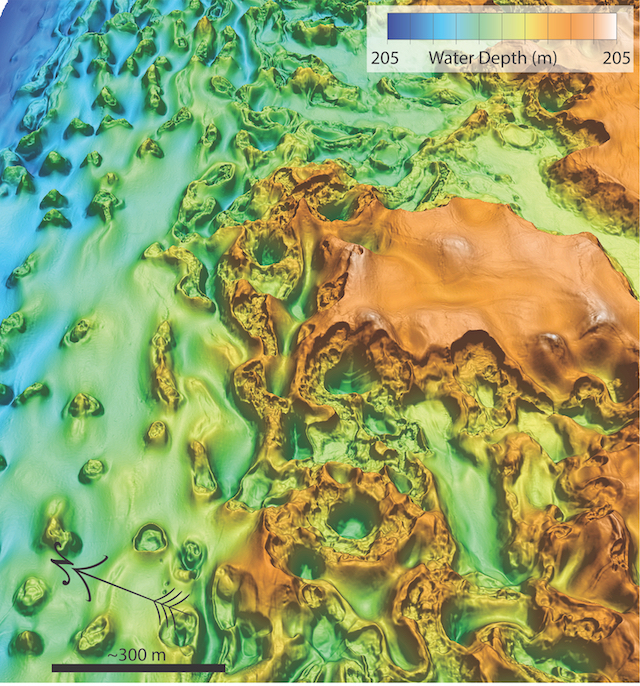
Hoverfly Brains Mapped To Detect The Sound Of Distant Drones
Disclaimer: These articles are not intended to provide medical advice, diagnosis or treatment. Views expressed here do not necessarily reflect those of Pittwater Online News or its staff.